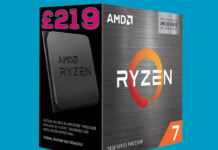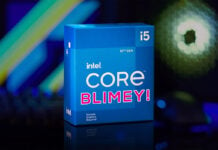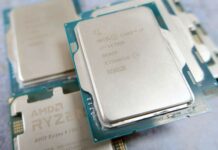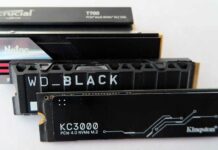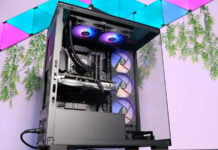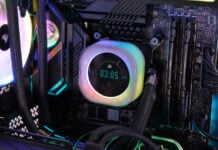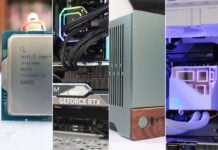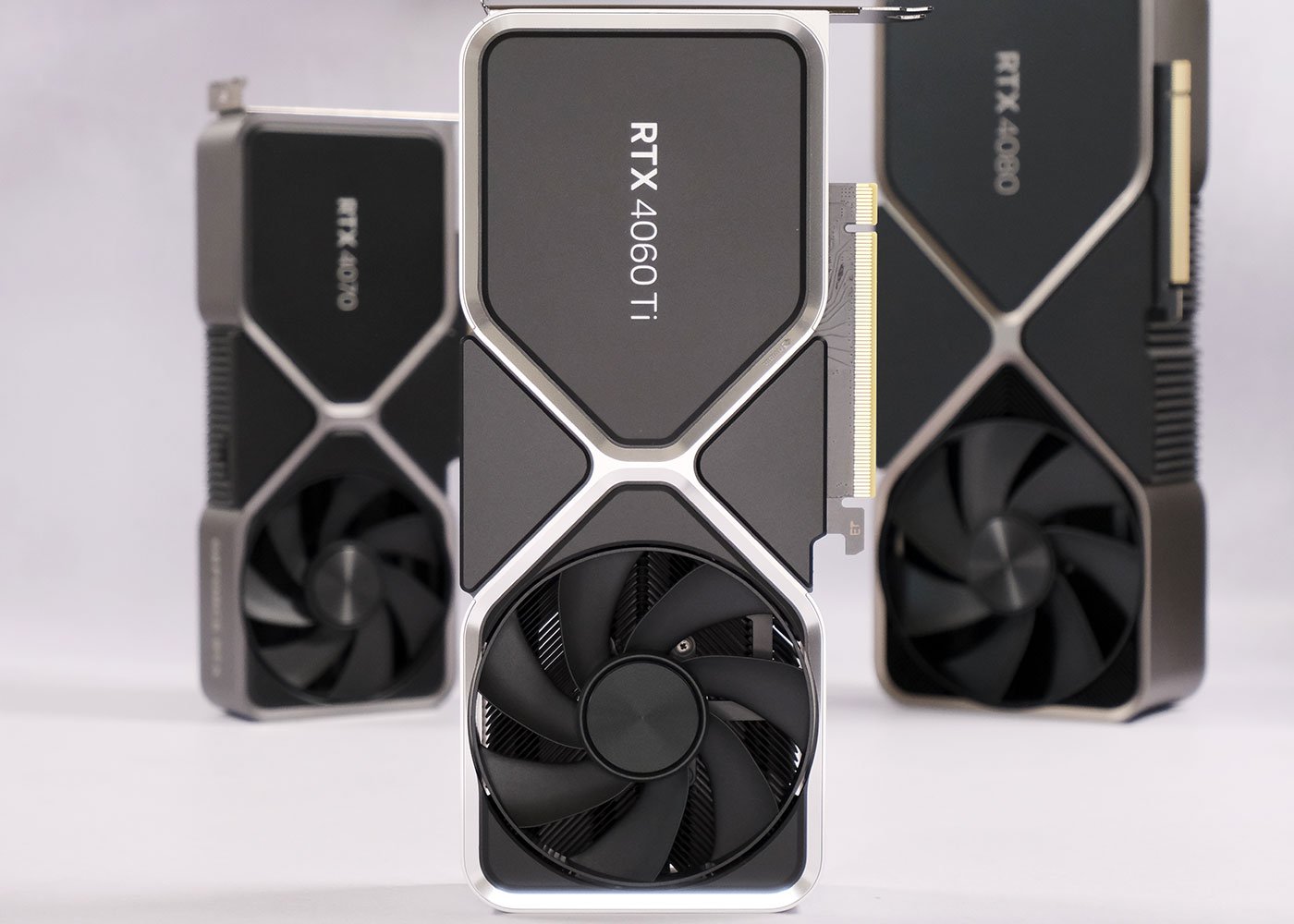Jump to: Specification | Architecture | Performance | Conclusion
Welcome to mainstream GPU week. Following a flurry of activity among the best graphics cards, the industry’s biggest names are now turning attention to affordable products where the majority of gamers ply their trade. Cards able to shift in volume are vital to success, as evidenced by the top 10 most popular GPUs on Steam – a list comprised entirely of products fetching less than £500 at launch.
Though RTX 4090 is without doubt an aspirational halo product, it captures a mere 0.42 per cent market share among Steam users, putting it behind even lowly Intel UHD Graphics 620. GTX 1650, a £149 product from 2020, continues to rule the roost, and both AMD and Nvidia are desperate to break that stranglehold with a compelling reason to upgrade. Omens are good, as prices are coming down, the mining boom is nothing more than a bad memory, stock shortages have ceased, and for those PC gamers who’ve been sat on the fence, opportunity beckons.
Adding extra spice to proceedings, the two driving forces in PC graphics are tackling the mainstream quandary almost simultaneously. AMD’s budget Radeon RX 7600 arrives tomorrow, but Nvidia fires the first shot with GeForce RTX 4060 Ti, officially available today at $399 / £379 in Founders Edition guise.
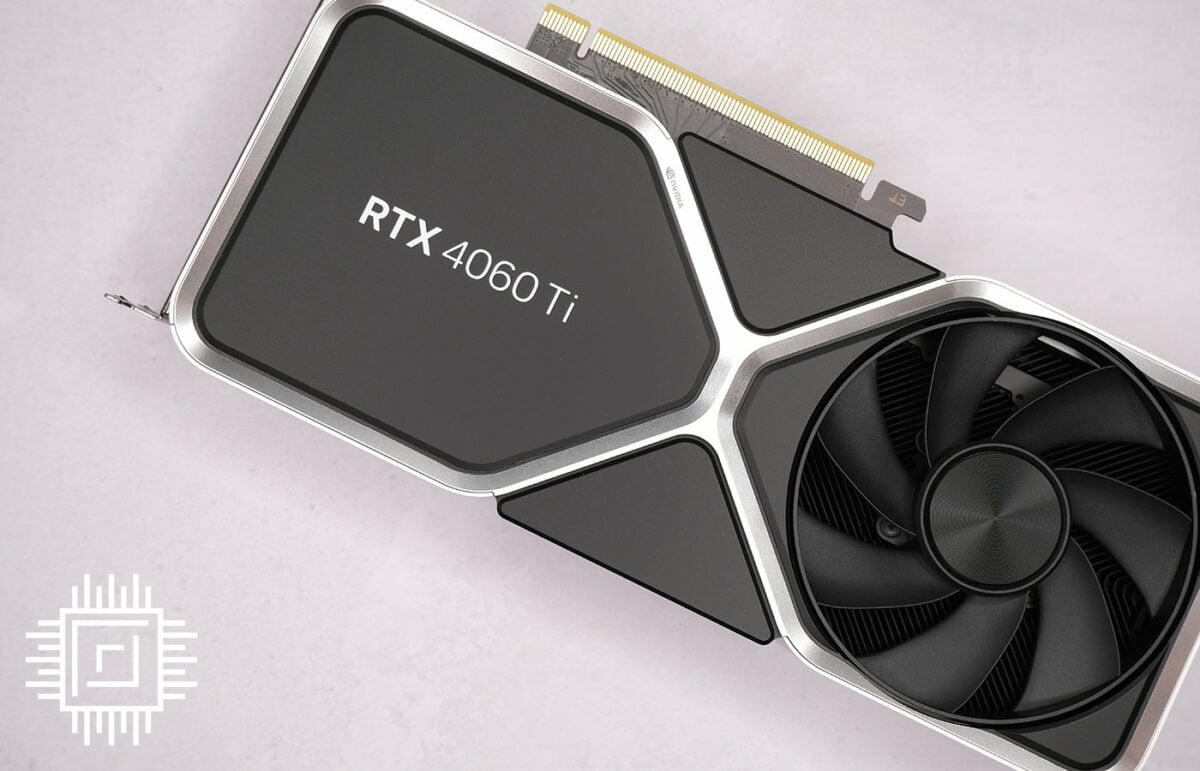
The promise is “unparalleled performance at fantastic value,” yet in the hope of finding a winning formula that sticks, Nvidia’s foray into mainstream RTX 40 Series products takes a three-pronged approach. RTX 4060 Ti will be followed swiftly by a 16GB variant and a regular RTX 4060 as soon as July. We’ll evaluate said cards in due course, but first thing’s first, let’s break out the trusty Club386 Table of DoomTM to see exactly how RTX 4060 Ti stacks up.
| GeForce | RTX 4090 | RTX 4080 | RTX 4070 TI | RTX 4070 | RTX 4060 Ti |
|---|---|---|---|---|---|
| Launch date | Oct 2022 | Nov 2022 | Jan 2023 | Apr 2023 | May 2023 |
| Codename | AD102 | AD103 | AD104 | AD104 | AD106 |
| Architecture | Ada | Ada | Ada | Ada | Ada |
| Process (nm) | 4 | 4 | 4 | 4 | 4 |
| Transistors (bn) | 76.3 | 45.9 | 35.8 | 35.8 | 22.9 |
| Die size (mm2) | 608.5 | 378.6 | 294.5 | 294.5 | 187.8 |
| SMs | 128 of 144 | 76 of 80 | 60 of 60 | 46 of 60 | 34 of 36 |
| CUDA cores | 16,384 | 9,728 | 7,680 | 5,888 | 4,352 |
| Boost clock (MHz) | 2,520 | 2,505 | 2,610 | 2,475 | 2,535 |
| Peak FP32 TFLOPS | 82.6 | 48.7 | 40.1 | 29.1 | 22.1 |
| RT cores | 128 | 76 | 60 | 46 | 34 |
| RT TFLOPS | 191.0 | 112.7 | 92.7 | 67.4 | 51.0 |
| Tensor cores | 512 | 304 | 240 | 184 | 136 |
| ROPs | 176 | 112 | 80 | 64 | 48 |
| Texture units | 512 | 304 | 240 | 184 | 136 |
| Memory size (GB) | 24 | 16 | 12 | 12 | 8 |
| Memory type | GDDR6X | GDDR6X | GDDR6X | GDDR6X | GDDR6 |
| Memory bus (bits) | 384 | 256 | 192 | 192 | 128 |
| Memory clock (Gbps) | 21 | 22.4 | 21 | 21 | 18 |
| Bandwidth (GB/s) | 1,008 | 717 | 504 | 504 | 288 |
| L1 cache (MB) | 16 | 9.5 | 7.5 | 5.8 | 4.4 |
| L2 cache (MB) | 72 | 64 | 48 | 36 | 32 |
| PCIe interface | 4.0 x16 | 4.0 x16 | 4.0 x16 | 4.0 x16 | 4.0 x8 |
| Power (watts) | 450 | 320 | 285 | 200 | 160 |
| Launch MSRP ($) | 1,599 | 1,199 | 799 | 599 | 399 |
You’ve seen this sort of progression before, and it’s an art Nvidia has mastered over the years. Introduce a new architecture as part of an all-singing, all-dancing product, and then chip away, if you’ll excuse the pun, over the ensuing months to fashion leaner GPUs at more affordable price points.
Lean, Mean RTX Gaming Machine
RTX 4060 Ti’s provenance is fascinating insofar as Nvidia has adopted a mobile-first strategy. AD106 has already featured in laptop devices earlier this year, which goes some way toward explaining the lean overall design. Arriving on desktop while ensuring a wide berth between itself and RTX 4070 further up the stack, the new entry point employs an extremely efficient AD106 die whose 187.8mm2 makes it extremely efficient to produce. This is, by some distance, the smallest x60-class chip we can recall, and testament to a maturing 4nm process.
A size reduction of over 70 per cent compared to top-dog RTX 4090 highlights how far RTX 40 Series is being asked to scale, yet such a shrink does result in some of the most significant cuts to date. Core count drops a further 26 per cent over RTX 4070, from 5,888 down to 4,352, and as you might have heard, the back-end is controversially curtailed to 8GB of GDDR6 memory via a narrow 128-bit bus.
Power consumption dropping to 160 watts is an obvious attraction in today’s age of steep electricity, yet in truth, RTX 4060 Ti specifications serve up no major surprises. It is roughly what we expected from a mainstream RTX 40 Series GPU, and as predicted, a $399 price tag remains consistent with prior generations.
The question is whether or not RTX 4060 Ti is well suited to carry the baton from hugely popular GPUs that came before. For that, we’ll need to compare the newcomer to the best x60 iteration from generations past. Here’s a table that’ll bring back memories.
| GeForce | GTX 960 | GTX 1060 | GTX 1660 Ti | RTX 2060 Super | RTX 3060 Ti | RTX 4060 Ti |
|---|---|---|---|---|---|---|
| Launch date | Jan 2015 | Jul 2016 | Feb 2019 | Jul 2019 | Dec 2020 | May 2023 |
| Codename | GM206 | GP106 | TU116 | TU106 | GA106 | AD106 |
| Architecture | Maxwell | Pascal | Turing | Turing | Ampere | Ada |
| Process (nm) | 28 | 14 | 12 | 12 | 8 | 4 |
| Transistors (bn) | 2.9 | 4.4 | 6.6 | 10.8 | 17.4 | 22.9 |
| Die size (mm2) | 227 | 200 | 284 | 445 | 393 | 187.8 |
| CUDA cores | 1,024 | 1,280 | 1,536 | 2,176 | 4,864 | 4,352 |
| Boost clock | 1,178 | 1,708 | 1,770 | 1,650 | 1,665 | 2,535 |
| Peak TFLOPS | 2.4 | 4.3 | 5.4 | 7.2 | 16.2 | 22.1 |
| RT cores | – | – | – | 34 | 38 | 34 |
| Tensor cores | – | – | – | 272 | 152 | 136 |
| Memory (GB) | 2 / 4 | 6 | 6 | 8 | 8 | 8 |
| Mem bus (bits) | 128 | 192 | 192 | 256 | 256 | 128 |
| Bandwidth (GB) | 112 | 192 | 288 | 448 | 448 | 288 |
| L2 cache (MB) | 1 | 1.5 | 1.5 | 4 | 4 | 32 |
| PCIe interface | 3.0 x16 | 3.0 x16 | 3.0 x16 | 3.0 x16 | 4.0 x16 | 4.0 x8 |
| Power (watts) | 120 | 120 | 120 | 175 | 200 | 160 |
| SLI | Yes | – | – | – | – | – |
| Display outputs | DVI HDMI 2.0 DisplayPort 1.2 | DVI HDMI 2.0 DisplayPort 1.4 | DVI HDMI 2.0 DisplayPort 1.4 | DVI HDMI 2.0 DisplayPort 1.4 | HDMI 2.1 DisplayPort 1.4 | HDMI 2.1 DisplayPort 1.4 |
| Resizable bar | – | – | – | – | Yes | Yes |
| NVENC | 3rd Gen | 4th Gen | 6th Gen | 6th Gen | 7th Gen | 8th Gen |
| DX12 Ultimate | – | – | – | Yes | Yes | Yes |
| Raytracing | 1st Gen | 2nd Gen | 3rd Gen | |||
| AI acceleration | – | – | – | DLSS | DLSS 2 | DLSS 3 |
| MSRP ($) | 199 | 249 | 279 | 399 | 399 | 399 |
An overview of half-a-dozen generations spanning the best part of a decade provides insight into where we’ve been, where we are, and importantly, where we’re headed.
Peruse the top half of the table and you can rightly marvel at the wonder of modern technology. We’ve gone from 28nm to 4nm in no time at all, helping pave the way to some astonishing metrics. The RTX 4060 Ti die is 17 per cent smaller than GTX 960 yet carries more than seven times the number of transistors. Add to that a staggering 115 per cent increase in boost clock and progress is clear to see; the march from 2.4 teraflops to 22.1 has been swift.
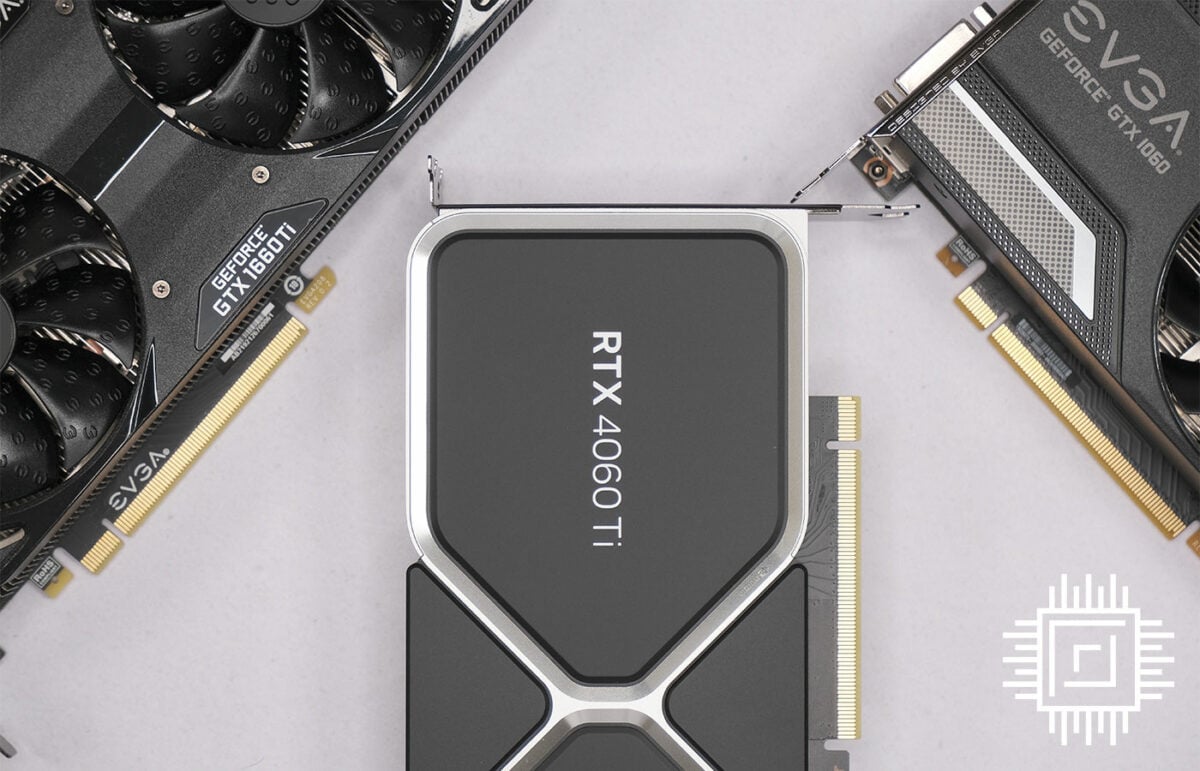
Temper that excitement in the knowledge that manufacturing challenges are now a pressing concern. Understanding the need to innovate in other areas rather than rely solely on ballooning transistor count, Nvidia switched gears in 2018 with wholesale changes culminating in a rebrand from GTX to RTX. New technologies such as hardware ray tracing and AI-acceleration are brought into the fold, and the importance of feature-level firepower is such that traditional specifications are in fact receding; RTX 4060 Ti is unusual insofar as it features fewer rasterisation cores than its immediate predecessor. That’s never happened before, and on paper, memory bandwidth has regressed, too.
We say on paper as, once again, Nvidia is attempting to balance performance using novel means. The time-honoured method of wider and faster is being set aside for smarter design; in this case a larger 32MB pool of L2 cache. An 8x increase over the previous generation is significant, and using in-house testing of cache hits and misses across a variety of titles, Nvidia reckons RTX 4060 Ti’s real-world bandwidth can be rated as an effective 554GB/s. That’s a fanciful metric certain to ruffle a few feathers among those who favour the old-fashioned way.
The VRAM Conundrum
The more pressing issue, we feel, is why VRAM has become a perceived bottleneck for graphics cards ostensibly intended for 1080p gaming. It is no coincidence PC games have begun to suffer in the aftermath of latest-generation game consoles. PlayStation 5 touts memory bandwidth of 448GB/s courtesy of 16GB of GDDR6 via a 256-bit bus, while Xbox Series X delivers 560GB/s through 10GB of GDDR6 attached to a 320-bit bus. Both systems target high resolution, and as is increasingly the case, resulting PC ports lack the desired optimisation to function optimally across a broad array of hardware configurations. Wait for the patch, as they say.
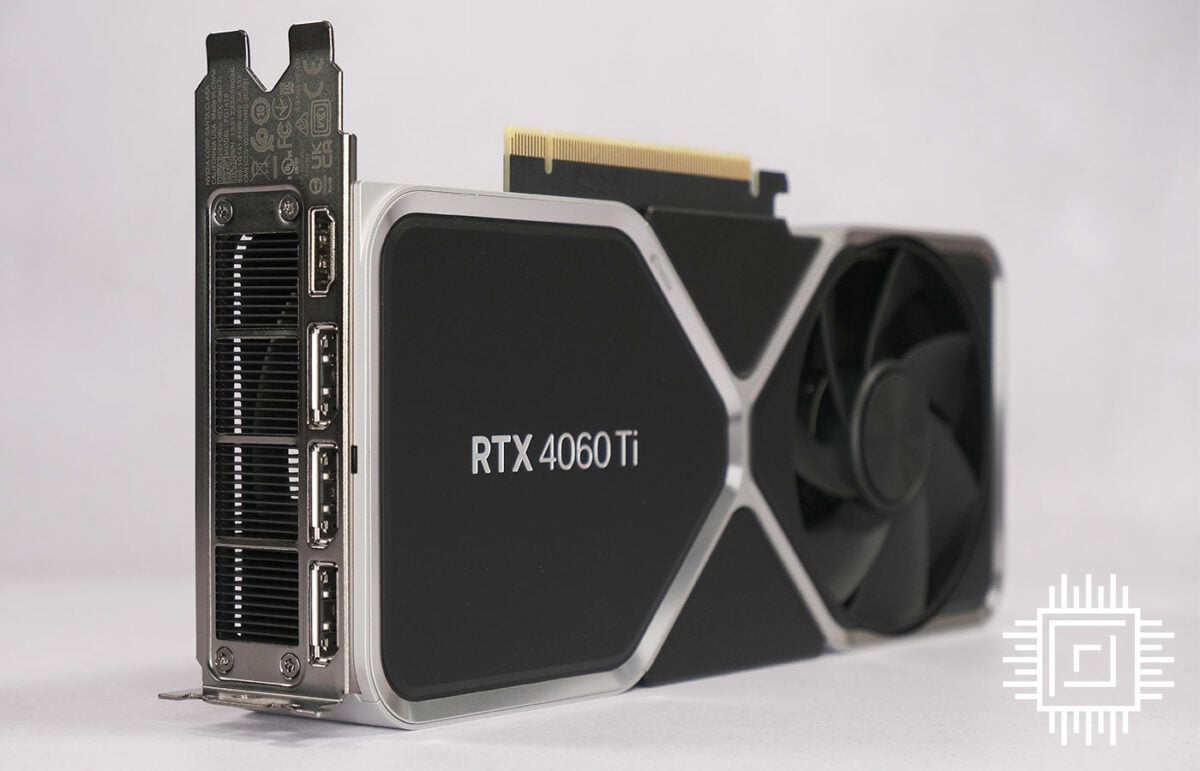
Aside from the odd, poorly-optimised title, 8GB ought to be sufficient for 1080p gaming in 2023, and in an unexpected admission, Nvidia’s own benchmarks suggest RTX 4060 Ti 16GB – coming in July starting at $499 from AIB partners – holds barely any perceptible performance advantage at the target resolution. Said card has the feel of a token gesture, intended merely to quell growing dissent of another generation of 8GB cards, and we’d liked to have seen RTX 4060 Ti feature a full implementation of 4,608 cores as another point of differentiation. Make no mistake, if it’s 1440p gaming you’re after, Nvidia wants RTX 4070 to serve as the preferred destination.
Going solely by specification, it is clear RTX 4060 Ti is not a momentous upgrade over existing RTX equivalents. Rather, it is intended to put GTX to bed and convince users still clinging to 16-, 10-, or 9-Series hardware to make the switch. There are good reasons to do so – support for resizeable bar, DX12 Ultimate, AV1 decoding and, of course, DLSS 3 frame generation all form part of the equation – however a $399 price tag remains a hurdle for what it is ultimately a 1080p card.
In an alternate universe, Nvidia may have foreseen a monumental fall in DRAM pricing and equipped cards accordingly. RTX 4060 Ti 12GB and RTX 4070 16GB would be a better fit for this generation, but we are where we are, and 8GB models may yet benefit consumers inadvertently. Word on the grapevine is that AMD has scrambled to cut Radeon RX 7600 pricing in the hours leading up to launch, and the overriding feeling at Club386 HQ is that GeForce RTX 4060 Ti would benefit from a more aggressive MSRP. At the very least, said card ought to include a free game; as things stand, the Diablo IV bundle offer applies only to RTX 4070 Series and above.
Nearly time for the benchmarks, but for those who are new to RTX 40 Series, a brief recap on the goodness of Nvidia’s latest-generation architecture.
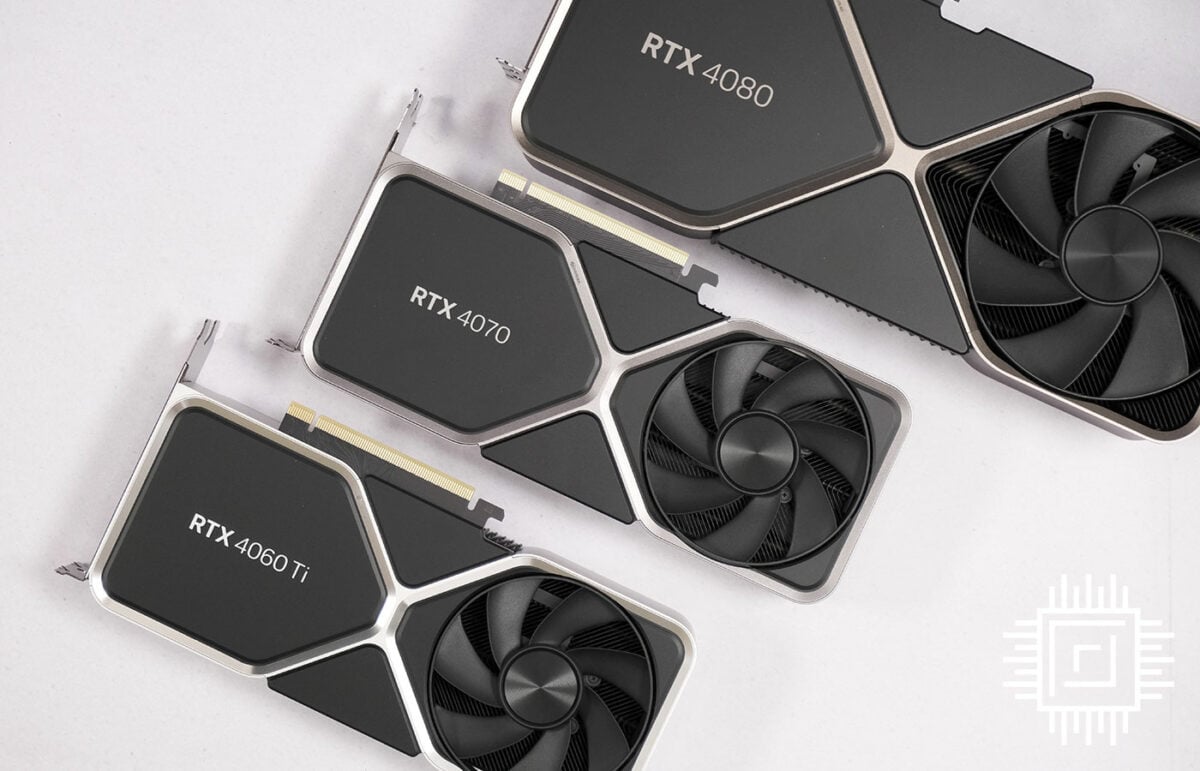
Ada Lovelace
While a shift to a smaller node affords more transistor firepower, such a move typically precludes sweeping changes to architecture. Optimisations and resourcefulness are order of the day, and the huge computational demands of raytracing are such that raw horsepower derived from a 3x increase in transistor budget isn’t enough; something else is needed, and Ada Lovelace brings a few neat tricks to the table.
Nvidia often refers to raytracing as a relatively new technology, stressing that good ol’ fashioned rasterisation has been through wave after wave of optimisation, and such refinement is actively being engineered for RT and Tensor cores. There’s plenty of opportunity where low-hanging fruit is yet to be picked.
Shader Execution Reordering
Shaders have been running efficiently for years, whereby one instruction is executed in parallel across multiple threads. You may know it as SIMT.
Raytracing, however, throws a spanner in those smooth works, as while pixels in a rasterised triangle lend themselves to running concurrently, keeping all lanes occupied, secondary rays are divergent by nature and the scattergun approach of hitting different areas of a scene leads to massive inefficiency through idle lanes.

Ada’s fix, dubbed Shader Execution Reordering (SER), is a new stage in the raytracing pipeline tasked with scanning individual rays on the fly and grouping them together. The result, going by Nvidia’s internal numbers, is a 2x improvement in raytracing performance in scenes with high levels of divergence.
Nvidia portentously claims SER is “as big an innovation as out-of-order execution was for CPUs.” A bold statement and there is a proviso in that Shader Execution Reordering is an extension of Microsoft’s DXR APIs, meaning it us up to developers to implement and optimise SER in games.
There’s no harm in having the tools, mind, and Nvidia is quickly discovering that what works for rasterisation can evidently be made to work for RT.
Upgraded RT Cores
In the rasterisation world, geometry bottlenecks are alleviated through mesh shaders. In a similar vein, displaced micro-meshes aim to echo such improvements in raytracing.
“The era of brute-force graphics rendering is over”
Bryan Catanzaro, Nvidia VP of applied deep learning research
With Ampere, the Bounding Volume Hierarchy (BVH) was forced to contain every single triangle in the scene, ready for the RT core to sample. Ada, in contrast, can evaluate meshes within the RT core, identifying a base triangle prior to tessellation in an effort to drastically reduce storage requirements.
A smaller, compressed BVH has the potential to enable greater detail in raytraced scenes with less impact on memory. Having to insert only the base triangles, BVH build times are improved by an order of magnitude and data sizes shrink significantly, helping reduce CPU overhead.
The sheer complexity of raytracing is such that eliminating unnecessary shader work has never been more important. To that end, an Opacity Micromap Engine has also been added to Ada’s RT core to reduce the amount of information going back and forth to shaders.
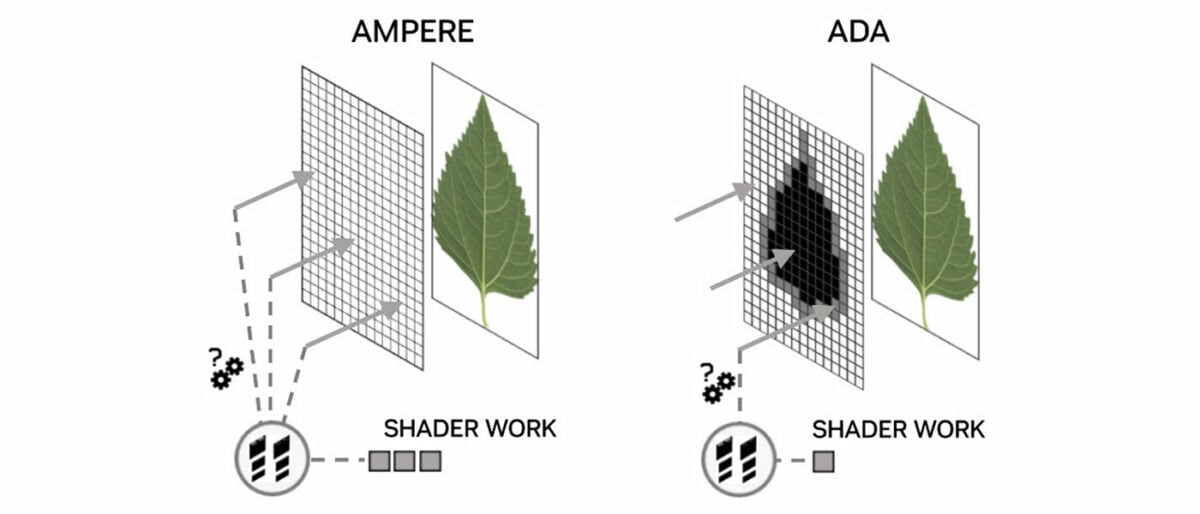
In the common leaf example, developers place the texture of foliage within a rectangle and use opaque polygons to determine the leaf’s position. A way to construct entire trees efficiently, yet with Ampere the RT core lacked this basic ability, with all rays passed back to the shader to determine which areas are opaque, transparent, or unknown. Ada’s Opacity Micromap Engine can identify all the opaque and transparent polygons without invoking any shader code, resulting in 2x faster alpha traversal performance in certain applications.
These two new hardware units make the third-generation RT core more capable than ever before – TFLOPS per RT core has risen by ~65 per cent between generations – yet all this isn’t enough to back up Nvidia’s claims of Ada Lovelace delivering up to 4x the performance of the previous generation. For that, Team Green continues to rely on AI.
DLSS 3
Since 2019, Deep Learning Super Sampling has played a vital role in GeForce GPU development. Nvidia’s commitment to the tech is best expressed by Bryan Catanzaro, VP of applied deep learning research, who states with no uncertainty that “the era of brute-force graphics rendering is over.”
Third-generation DLSS, deemed a “total revolution in neural graphics,” expands upon DLSS Super Resolution’s AI-trained upscaling by employing optical flow estimation to generate entire frames. Through a combination of DLSS Super Resolution and DLSS Frame Generation, Nvidia reckons DLSS 3 can now reconstruct seven-eighths of a game’s total displayed pixels, to dramatically increase performance and smoothness.
Generating so much on-screen content without invoking the shader pipeline would have been unthinkable just a few years ago. It is a remarkable change of direction, but those magic extra frames aren’t conjured from thin air. DLSS 3 takes four inputs – two sequential in-game frames, an optical flow field and engine data such as motion vectors and depth buffers – to create and insert synthesised frames between working frames.
In order to capture the required information, Ada’s Optical Flow Accelerator is capable of up to 300 TeraOPS (TOPS) of optical-flow work, and that 2x speed increase over Ampere is viewed as vital in generating accurate frames without artifacts.
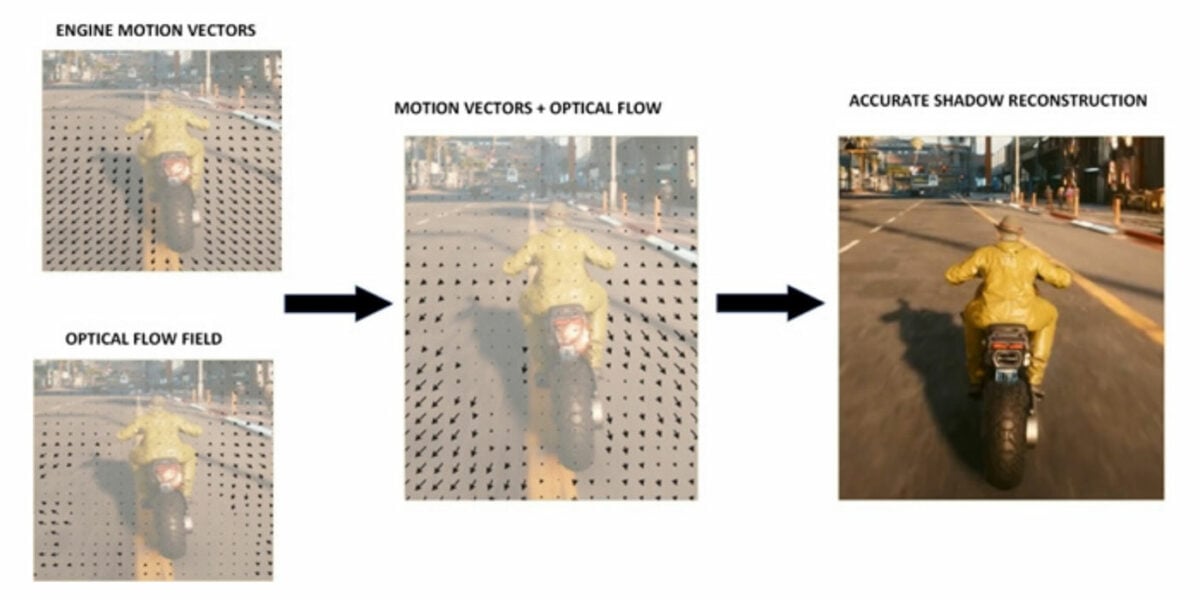
The real-world benefit of AI-generated frames is most keenly felt in games that are CPU bound, where DLSS Super Resolution can typically do little to help. Nvidia’s preferred example is Microsoft Flight Simulator, whose vast draw distances inevitably force a CPU bottleneck. Internal data suggests DLSS 3 Frame Generation can boost Flight Sim performance by as much as 2x.
Do note, also, that Frame Generation and Super Resolution can be implemented independently by developers. In an ideal world, gamers will have the choice of turning the former on/off, while being able to adjust the latter via a choice of quality settings.
More demanding AI workloads naturally warrant faster Tensor Cores, and Ada obliges by imbuing the FP8 Transformer Engine from HPC-optimised Hopper. Peak FP16 Tensor teraflops performance is already doubled from 320 on Ampere to 661 on Ada, but with added support for FP8, RTX 4090 can deliver a theoretical 1.3 petaflops of Tensor processing.
Plenty of bombast, yet won’t such processing result in an unwanted hike in latency? Such concerns are genuine; Nvidia has taken the decision to make Reflex a mandatory requirement for DLSS 3 implementation.
Designed to bypass the traditional render queue, Reflex synchronises CPU and GPU workloads for optimal responsiveness and up to a 2x reduction in latency. Ada optimisations and in particular Reflex are key in keeping DLSS 3 latency down to DLSS 2 levels, but as with so much that is DLSS related, success is predicated on the assumption developers will jump through the relevant hoops. In this case, Reflex markers must be added to code, allowing the game engine to feed back the data required to coordinate both CPU and GPU.
Given the often-sketchy state of PC game development, gamers are right to be cautious when the onus is placed in the hands of devs, and there is another caveat in that DLSS tech is becoming increasingly fragmented between generations.
DLSS 3 now represents a superset of three core technologies: Frame Generation (exclusive to RTX 40 Series), Super Resolution (RTX 20/30/40 Series), and Reflex (any GeForce GPU since the 900 Series). Nvidia has no immediate plans to backport Frame Generation to slower Ampere cards.
8th Generation NVENC
Last but not least, Ada Lovelace is wise not to overlook the soaring popularity of game streaming, both during and after the pandemic.
Building upon Ampere’s support for AV1 decoding, Ada adds hardware encoding, improving H.264 efficiency to the tune of 40 per cent. This, says Nvidia, allows streamers to bump their stream resolution to 1440p while maintaining the same bitrate.
AV1 support also bodes well for professional apps – DaVinci Resolve is among the first to announce compatibility – and Nvidia extends this potential on high-end RTX 40 Series GPUs by including up to two 8th Gen NVENC encoders (enabling 8K60 capture and 2x quicker exports) as well as a 5th Gen NVDEC decoder as standard.
Performance
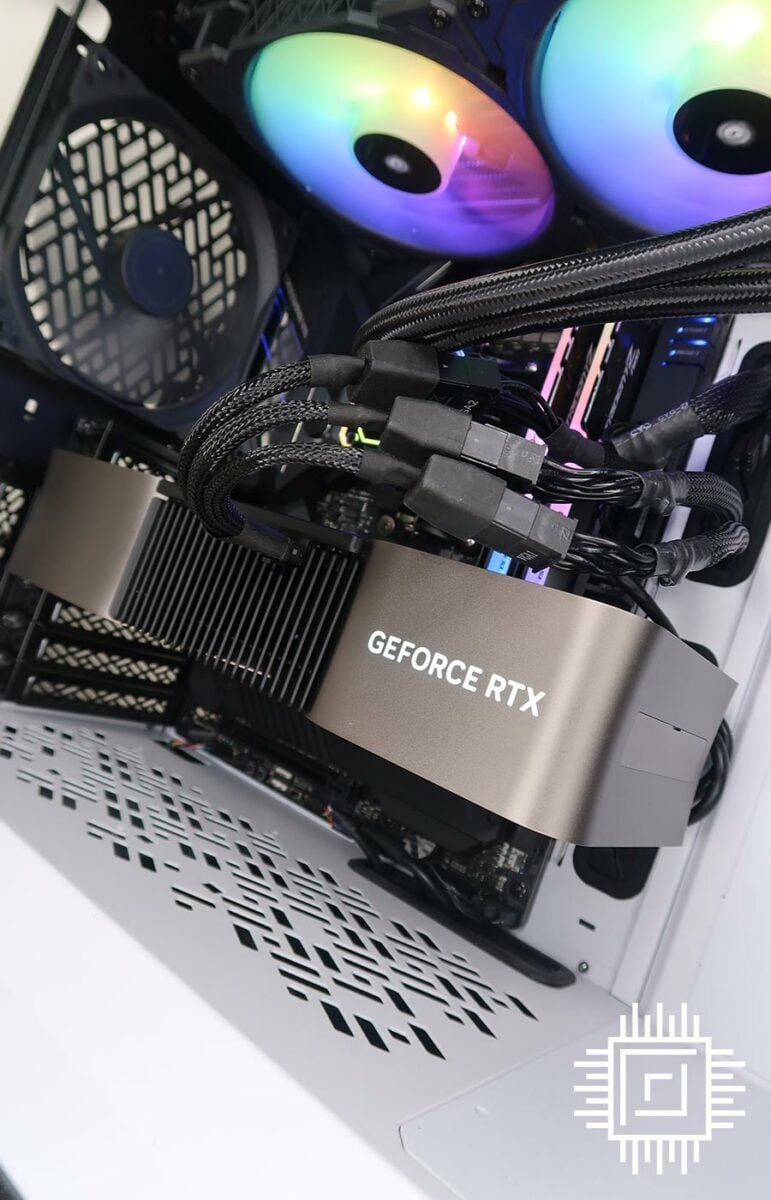
Club386 Test Platform
Processor: AMD Ryzen 9 5950X
Motherboard: Asus ROG Crosshair VII Formula
CPU Cooler: Corsair iCue H115i Elite Capellix
Memory: 64GB G.Skill Trident Z Neo DDR4-3200
Storage: 2TB Corsair MP600
Power Supply: be quiet! Straight Power 11 Platinum 1,000W
Chassis: Fractal Design Define 7 Clear Tempered Glass
Monitor: Philips Momentum 436M6VBPAB
Operating System: Microsoft Windows 11 Pro
Club386 may earn an affiliate commission when you purchase products through links on our site.
Our trusty test platforms have been working overtime these past few months, and though the PCIe slot is starting to look worse for wear, the twin AM4 rigs haven’t skipped a beat. Readers wanting to see how RTX 4060 Ti compares to high-end products can cross-reference earlier Club386 reviews, but for the purpose of this editorial, we’re focussing exclusively on mainstream GPUs slotting in below RTX 4070.
Some of the world’s most popular cards – GTX 1660 Ti, GTX 1060 and RTX 3060 – have been tested from scratch using the latest drivers, and just to make things interesting, we’ve also included a couple of outliers in the form of Intel Arc A770 16GB and AMD Radeon RX 6750 XT 12GB, both of which serve as direct competitors having fallen as low as £359 and £349, respectively.
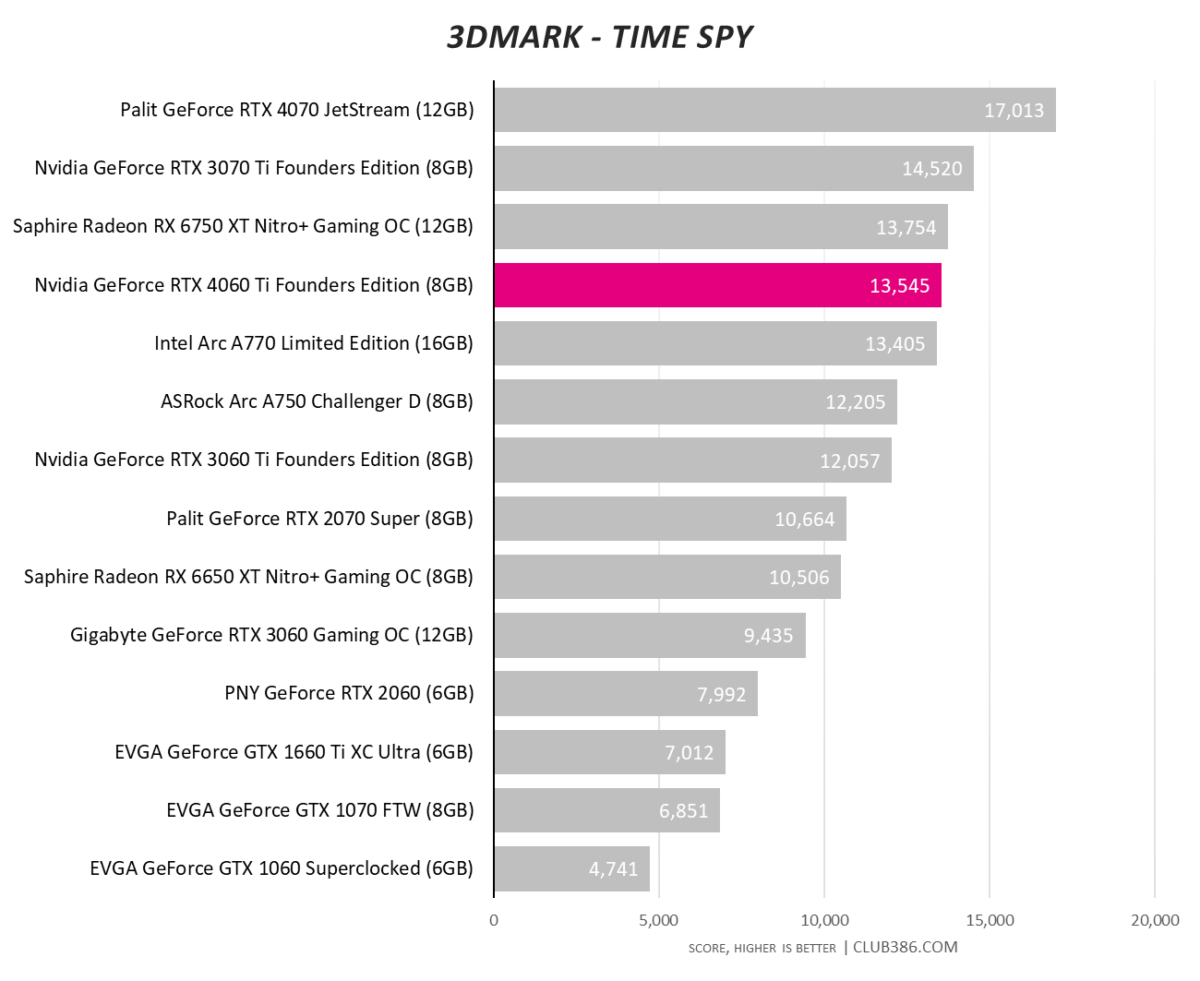
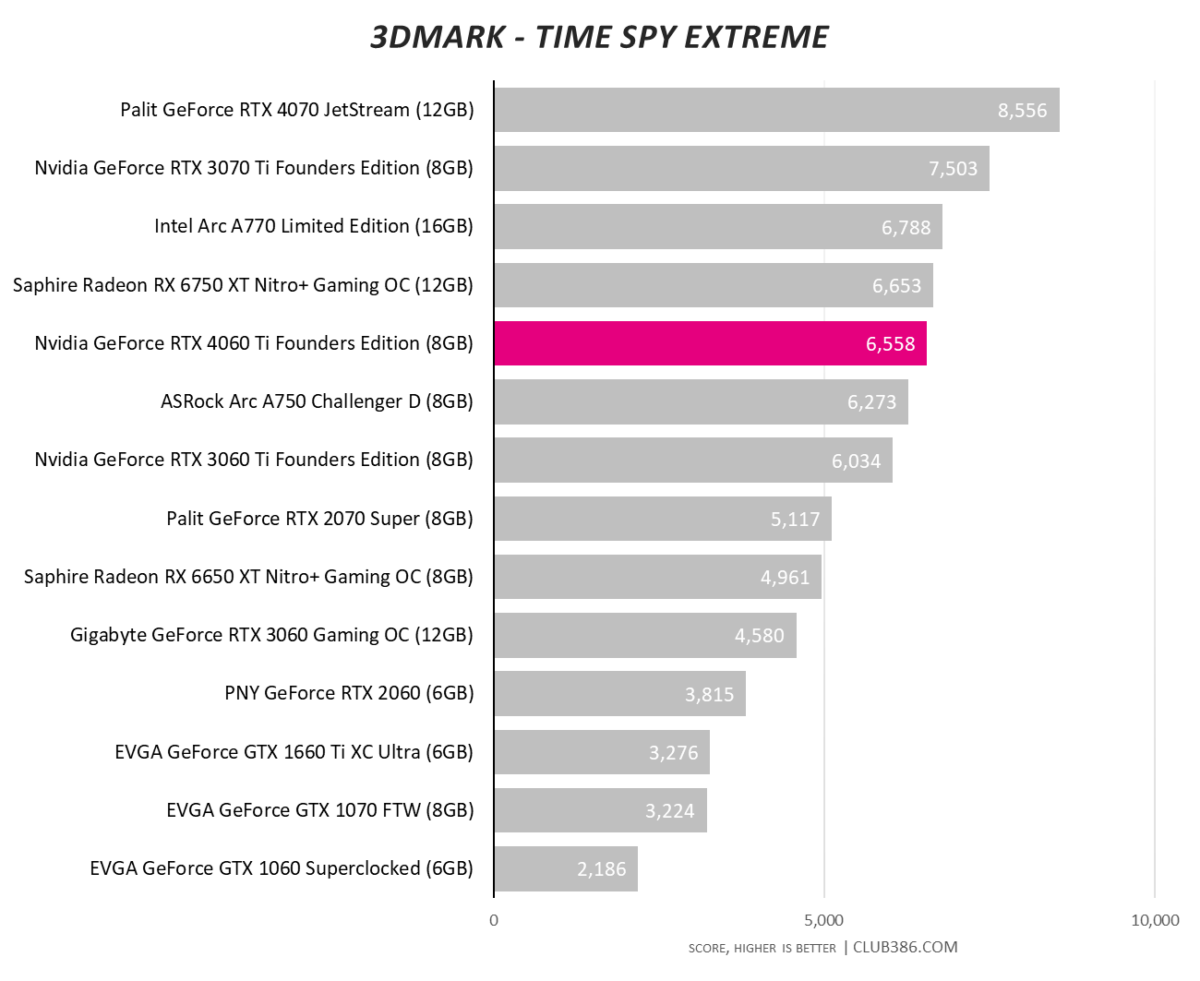
3DMark remains a good indicator of a GPU’s rasterisation credentials and RTX 4060 Ti is deemed to be roughly 10 per cent quicker than RTX 3060 Ti across both resolutions. A modest bump given the latter is approaching its third birthday.
Appreciating users of much older GPUs may consider RTX 4060 Ti as a useful upgrade, migrating from GTX 1660 Ti nets a doubling of performance, while those still rocking a GTX 1060 will see a 3x increase. That’s the audience Nvidia craves most.
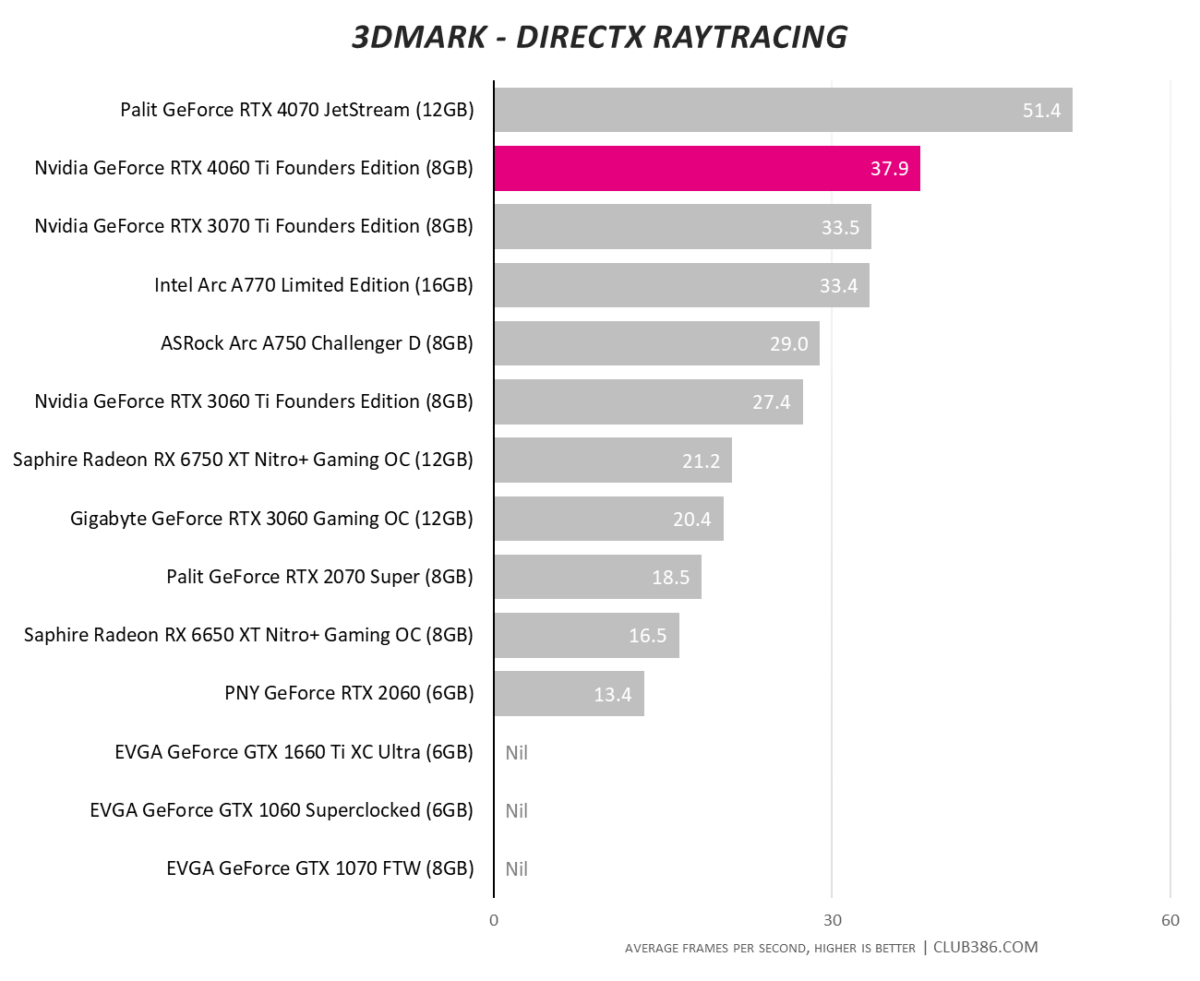
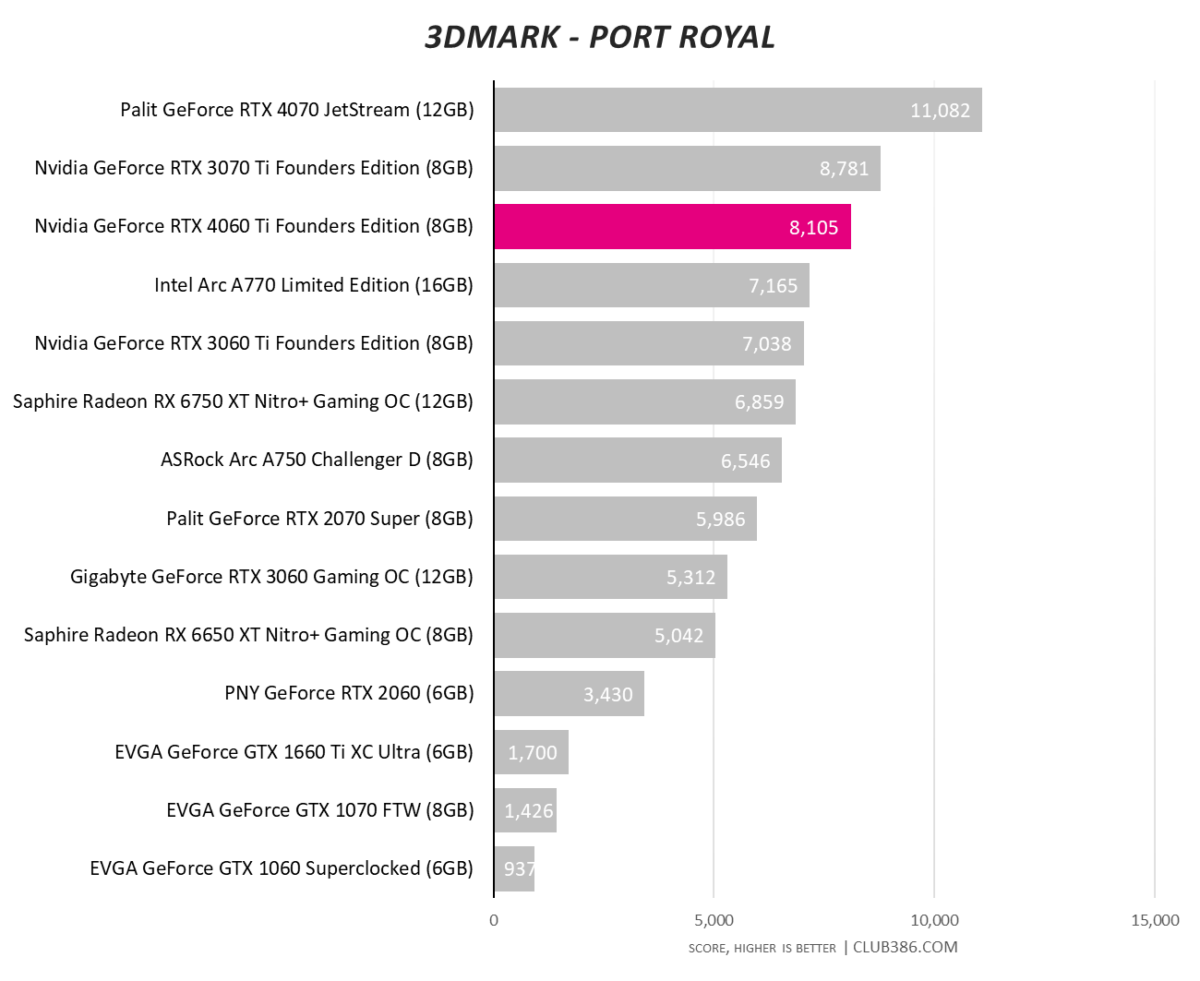
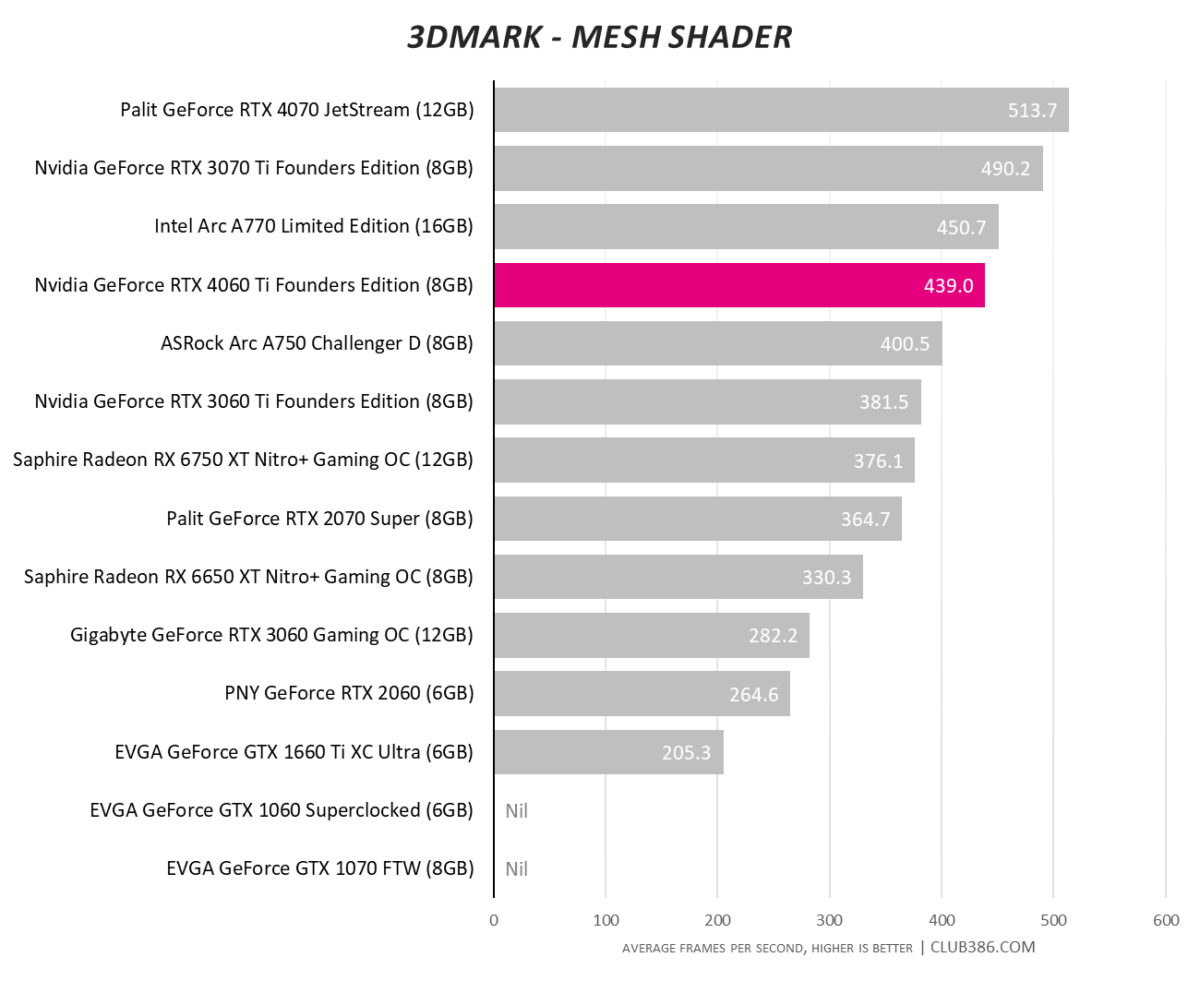
Hardware ray tracing and a forward-looking architecture continue to act as hallmarks of the Ada Lovelace architecture. Nvidia continues to hold an advantage in such tests, but shout out to Intel Arc, an oft-forgotten GPU that has become increasingly competitive over time.
Assassin’s Creed Valhalla
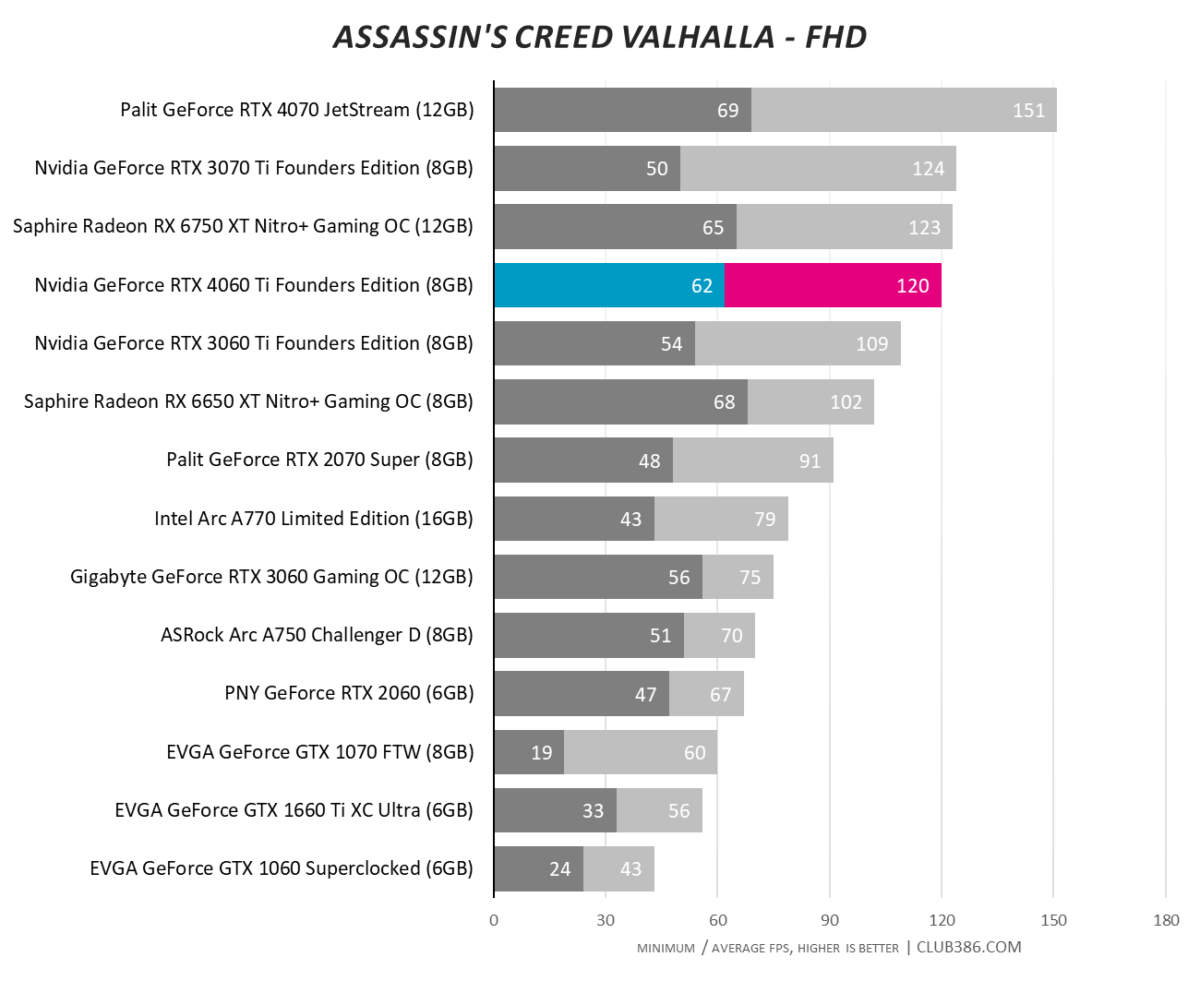
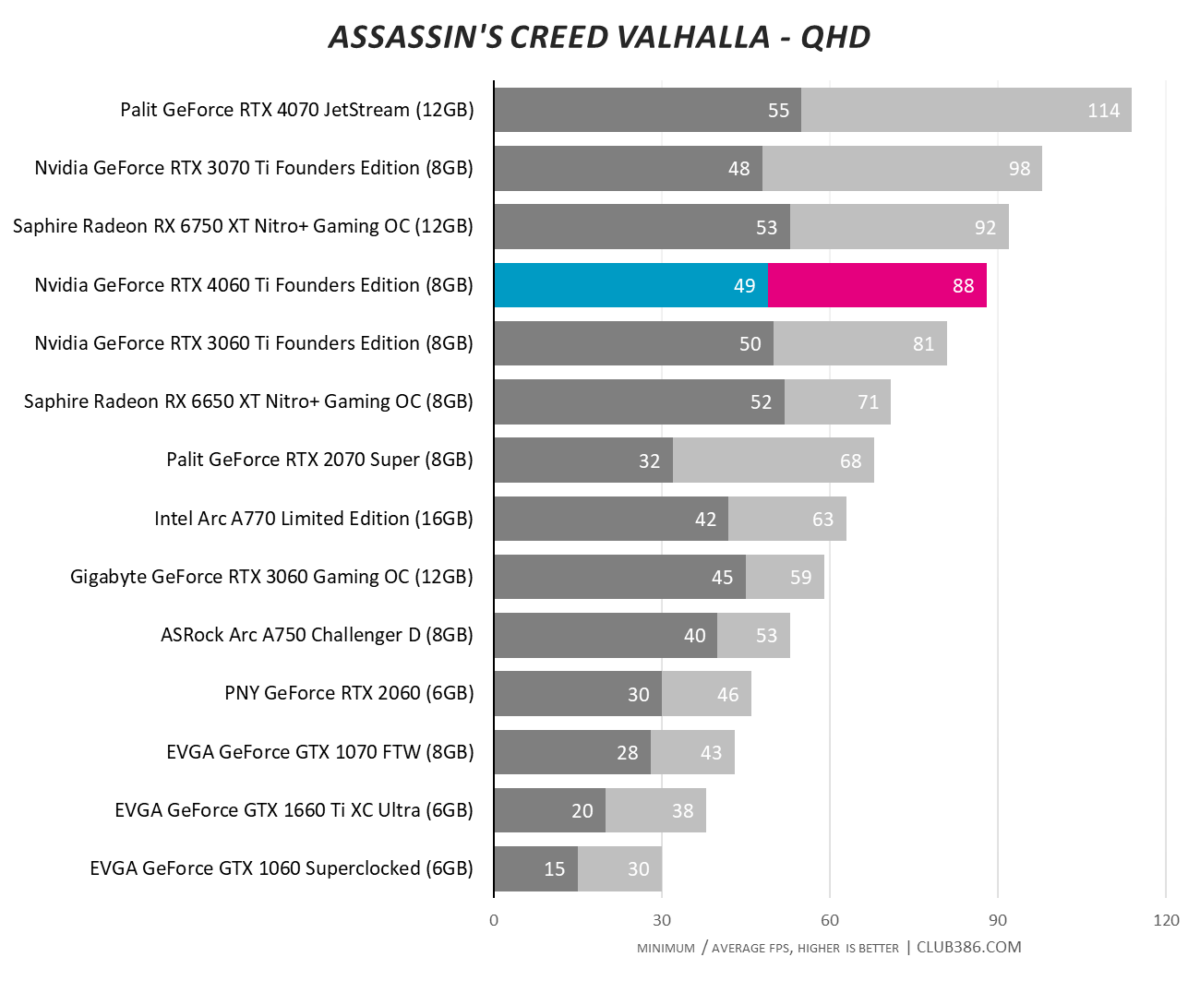
Owners of RTX 3060 Ti will be in no hurry to rush out and buy. An ~80 per cent performance uplift from RTX 2060 to RTX 4060 Ti is more promising, but you’ll need to upgrade from older GTX x60 cards in order to witness a doubling of framerate.
Cyberpunk 2077
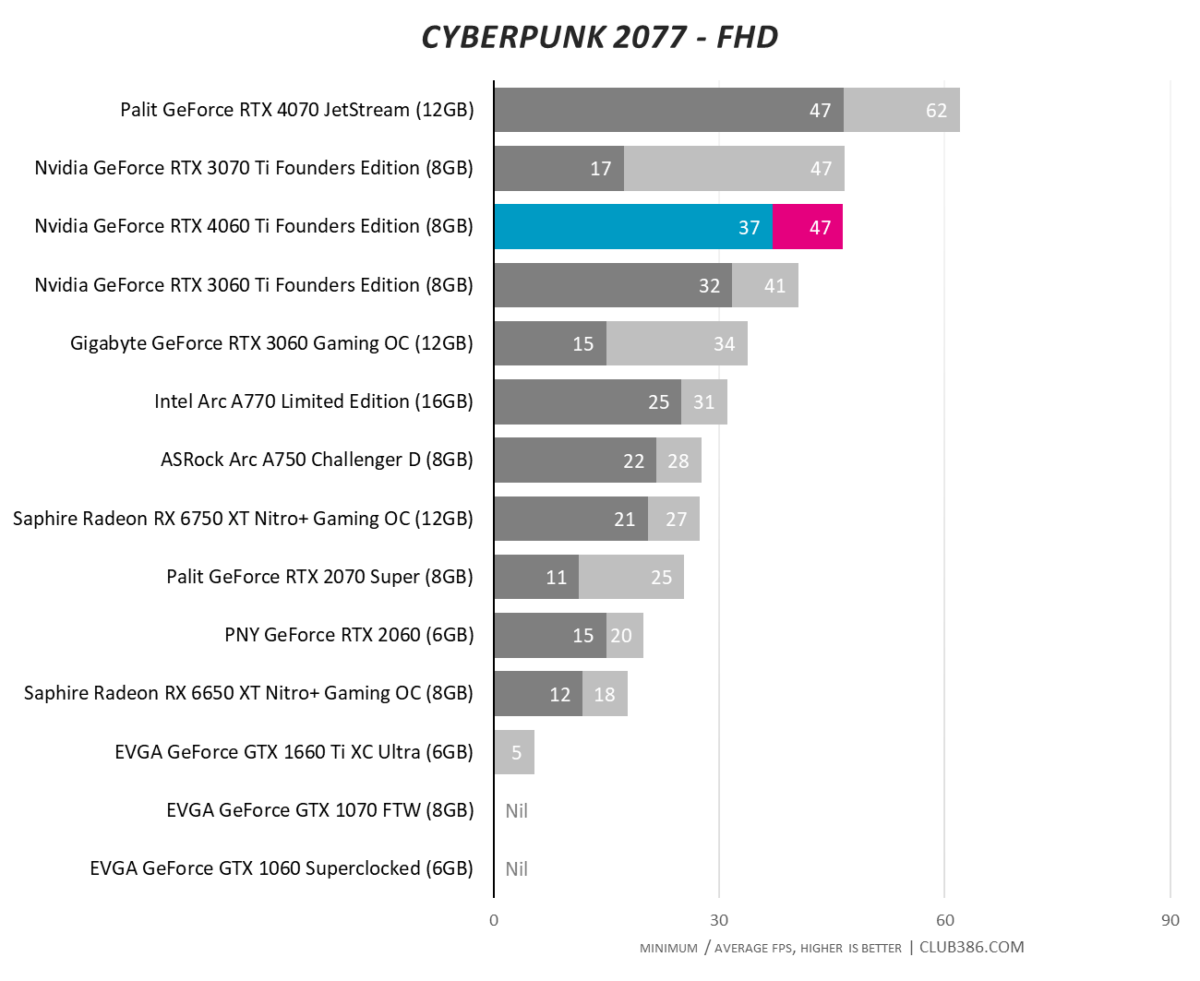
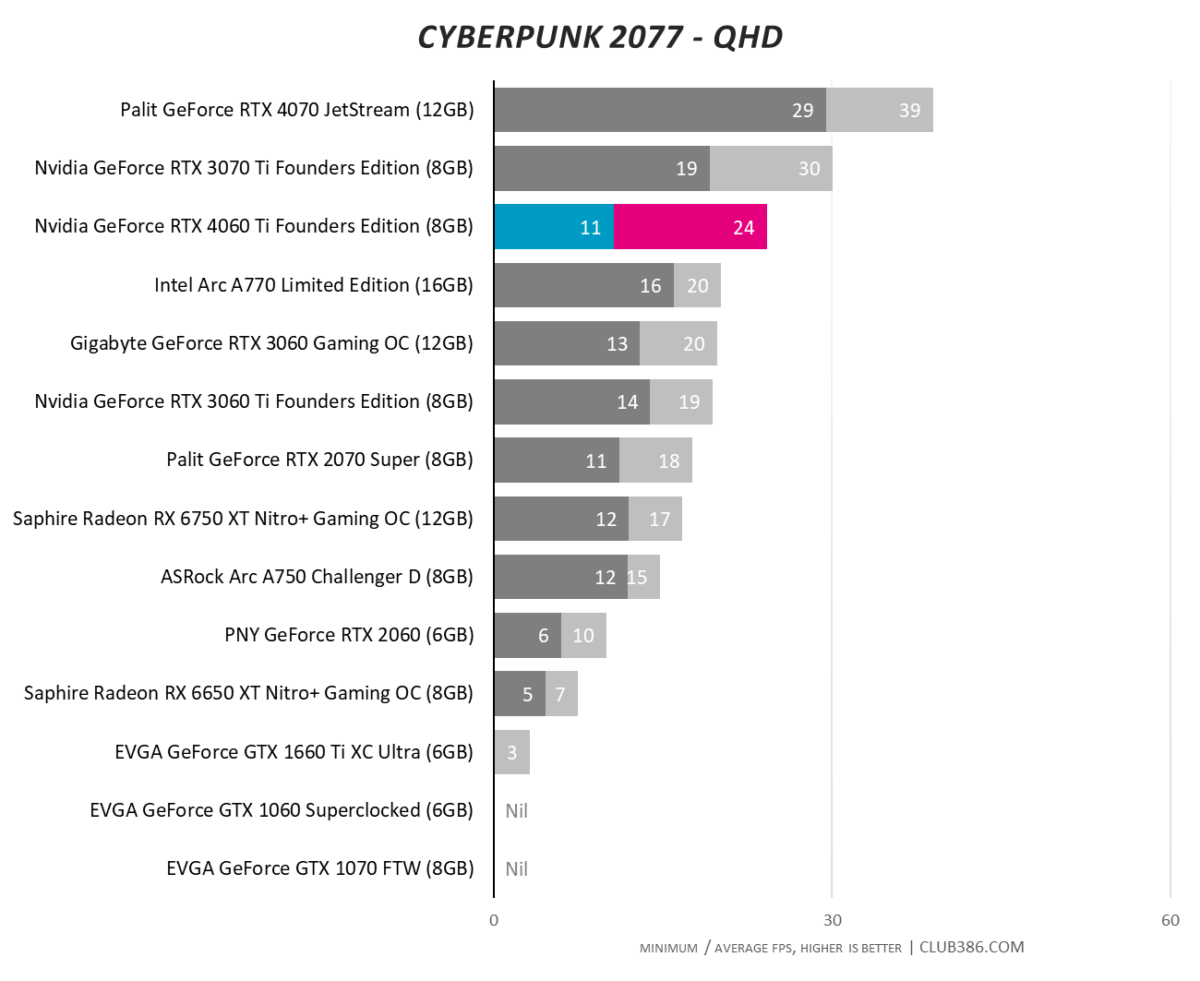
Modern-day Crysis. Cyberpunk 2077, with ultra raytracing enabled, puts the pain on all GPUs in this bracket.
Far Cry 6
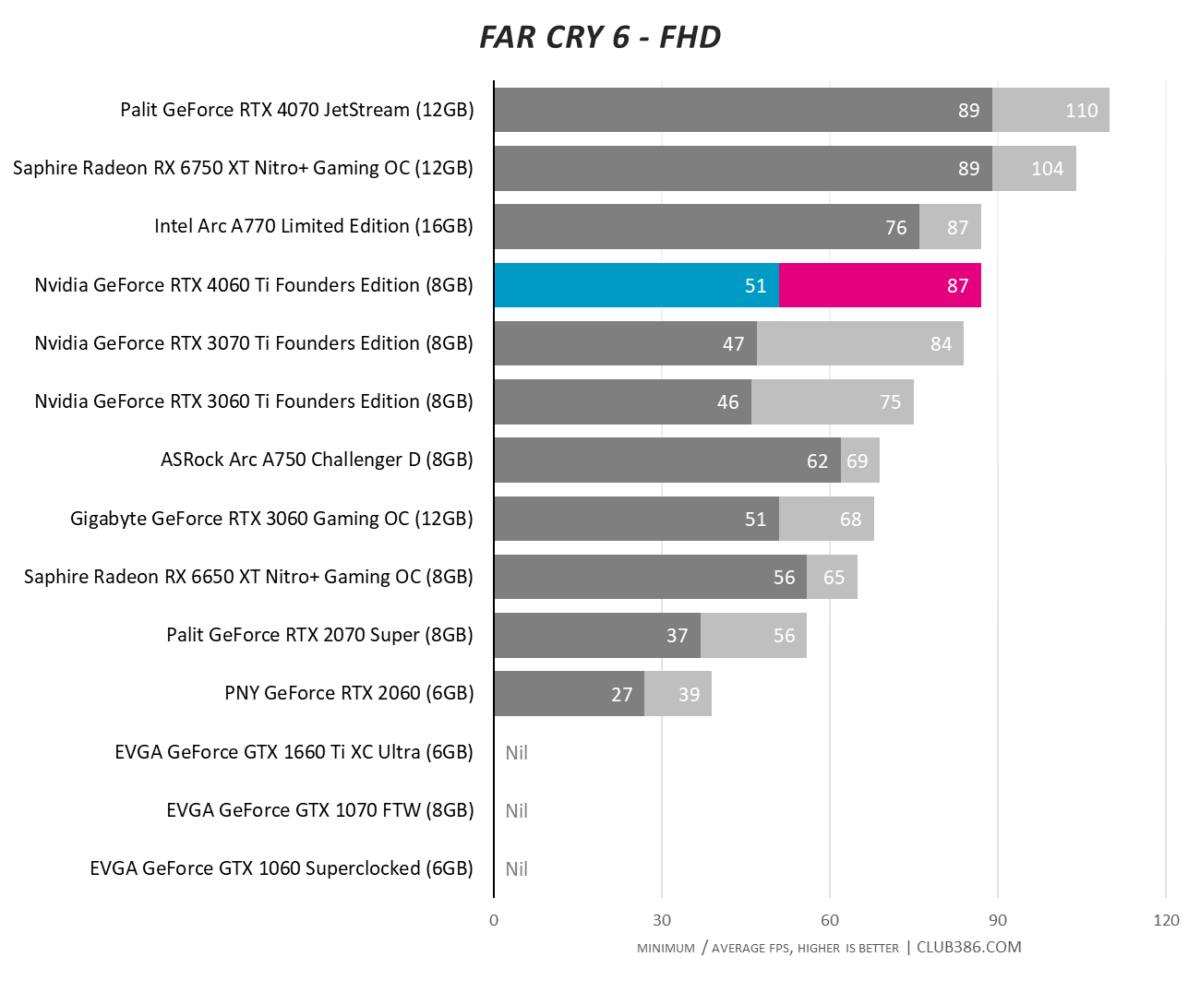
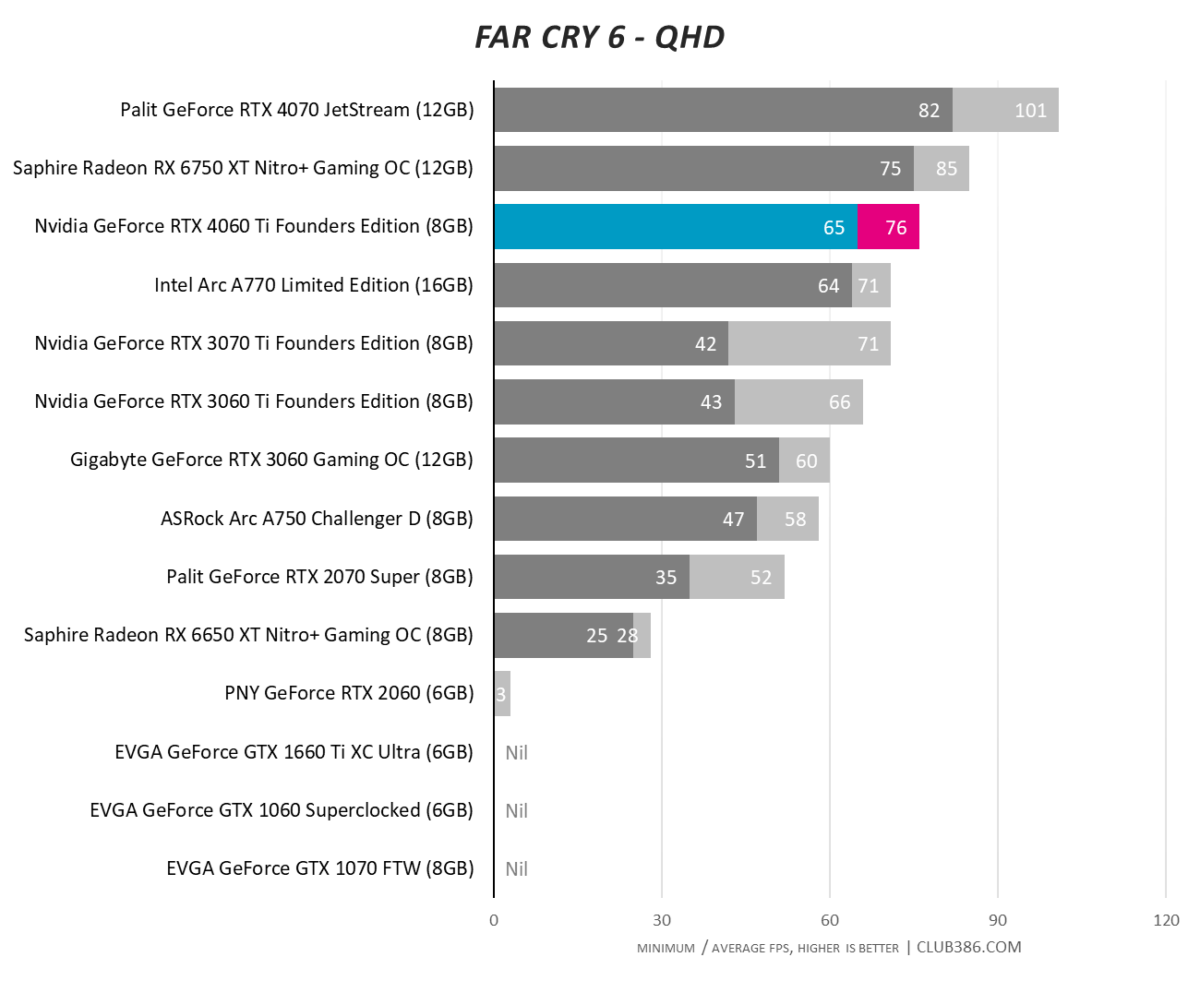
Price drops on existing cards are a thorn in RTX 4060 Ti’s side. Nvidia’s newcomer succeeds as a high-framerate 1080p GPU, yet do be aware Radeon RX 6750 XT offers better non-RT performance in some games, packs more memory, and is available for £349 if you shop around.
Final Fantasy XIV: Endwalker
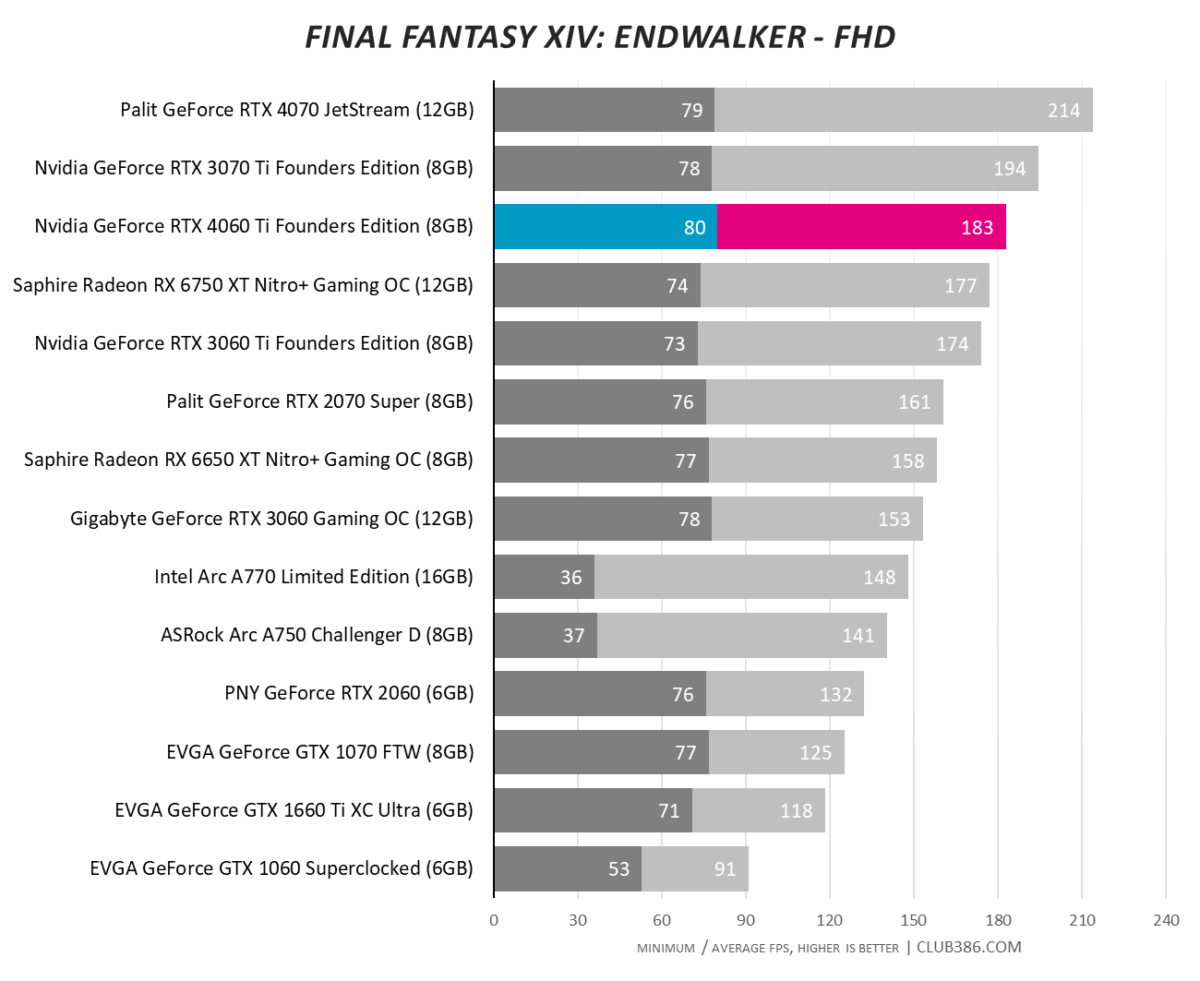
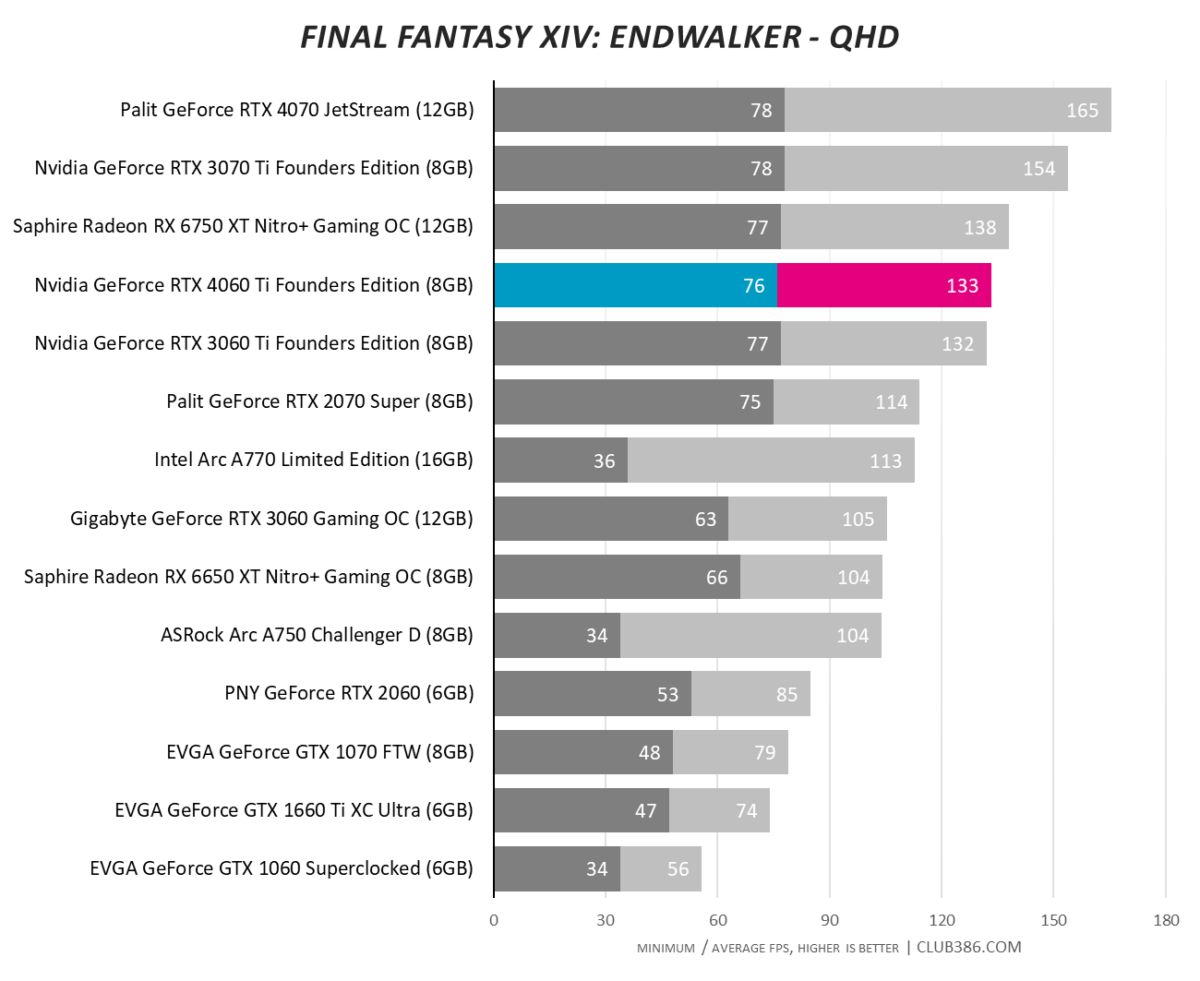
Final Fantasy XIV: Endwalker, a game relying heavily on rasterisation, also takes a liking to traditional memory bandwidth. An increase of L2 cache doesn’t appear to be helping here, as RTX 4060 Ti and RTX 3060 Ti are virtually indistinguishable.
Forza Horizon 5
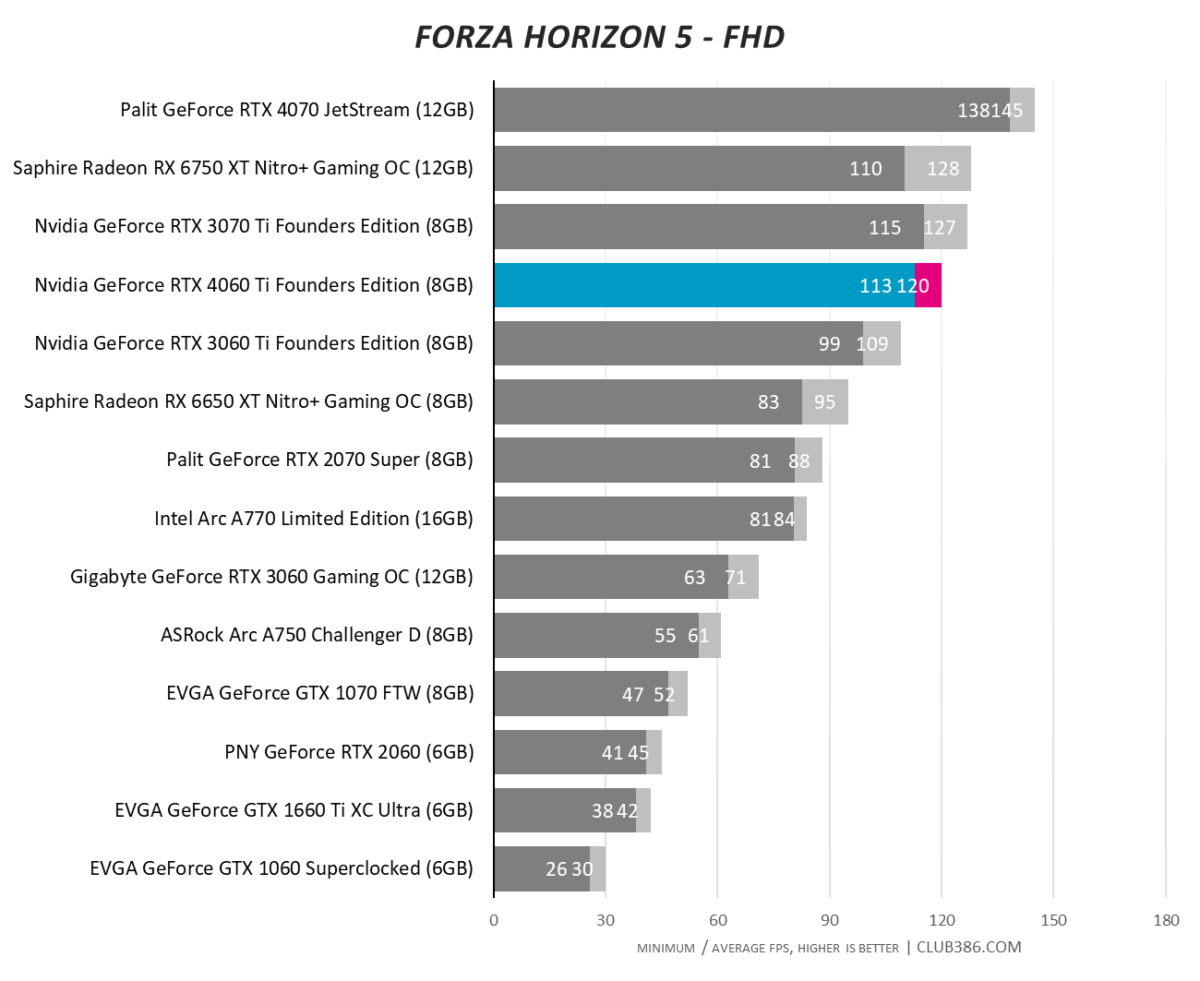
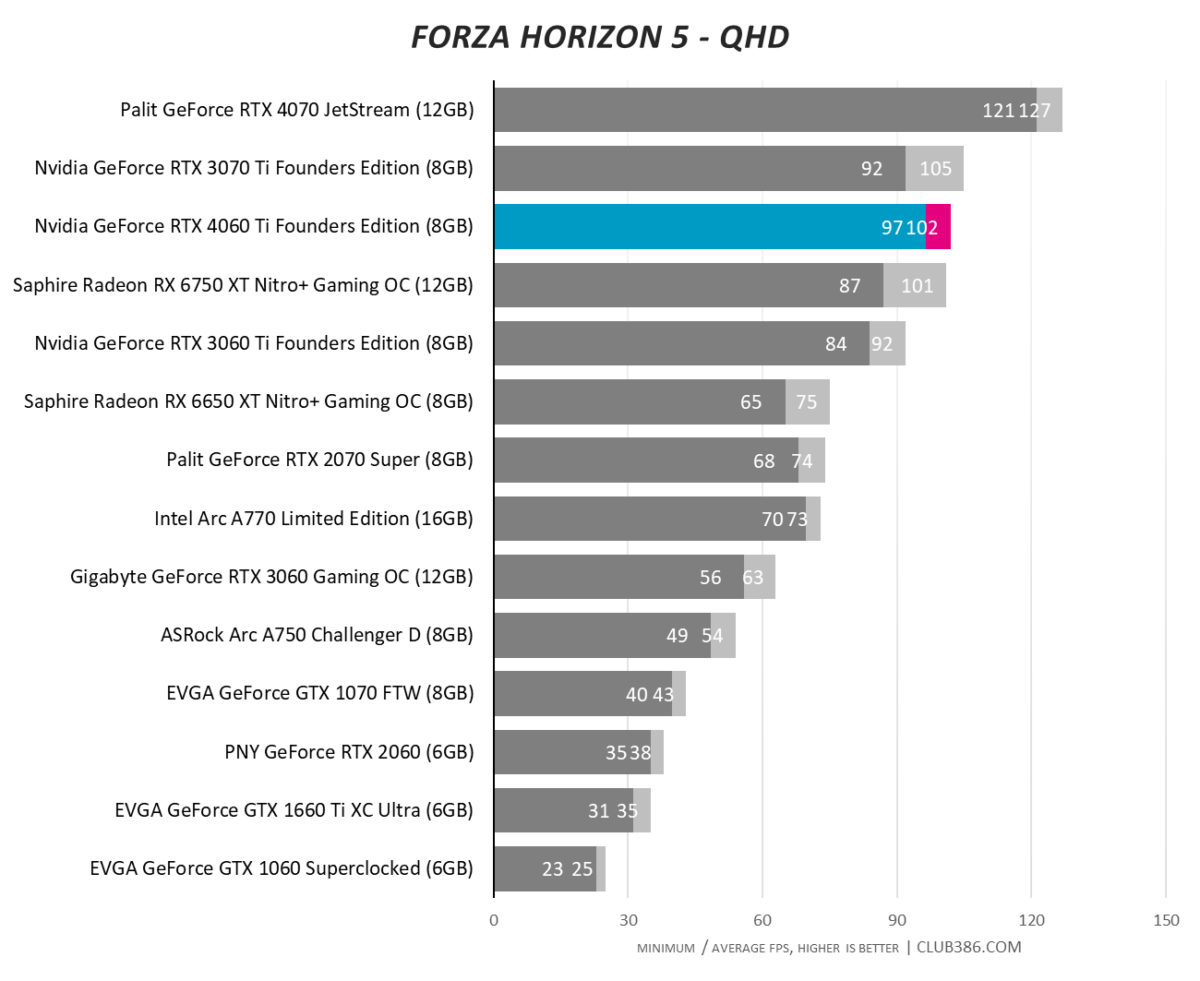
Four times faster than GTX 1060 offers good incentive to finally make that upgrade. The performance advantage over RTX 3060 Ti, however, represents arguably the smallest generational bump in recent times.
Tom Clancy’s Rainbow Six Extraction
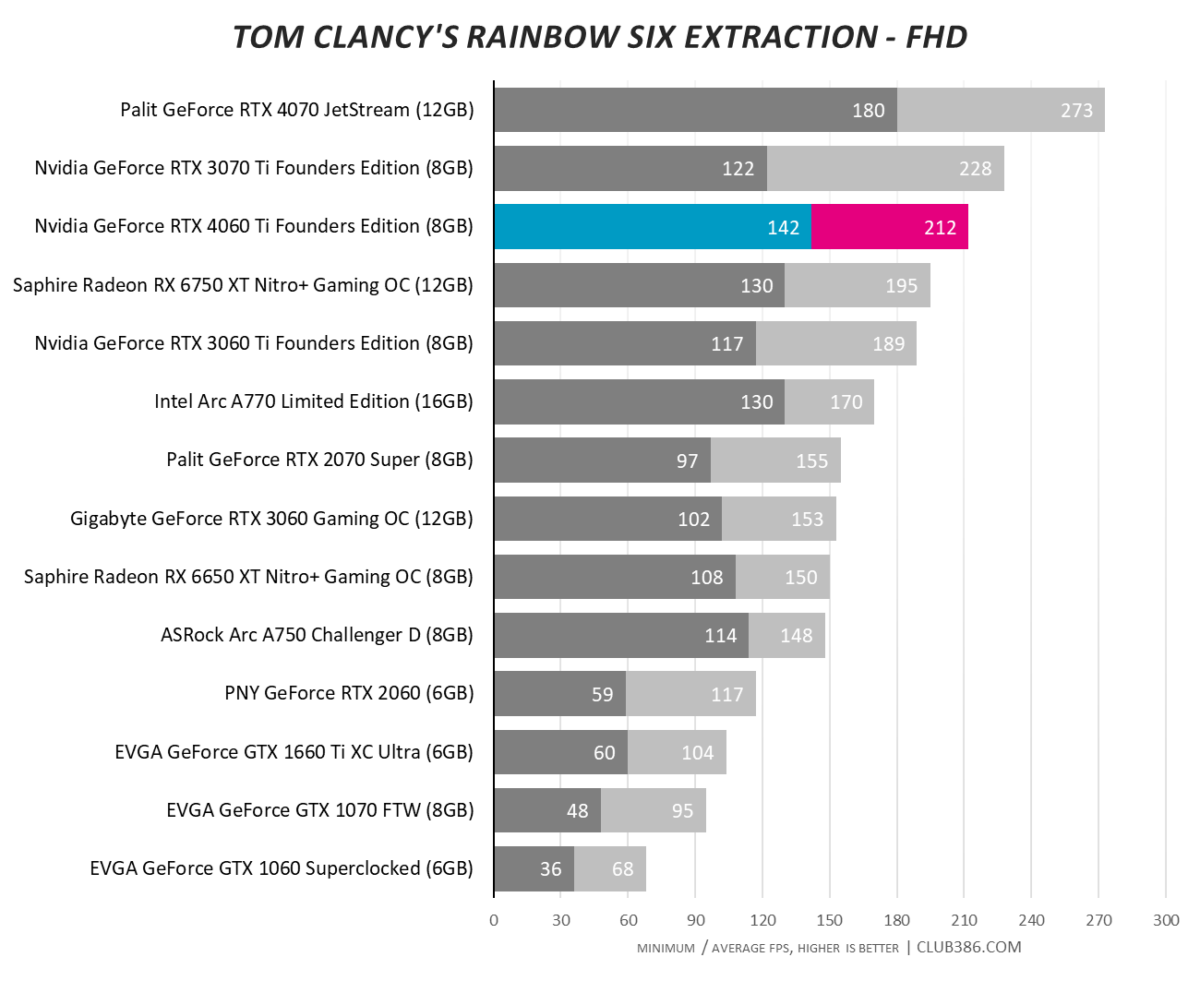
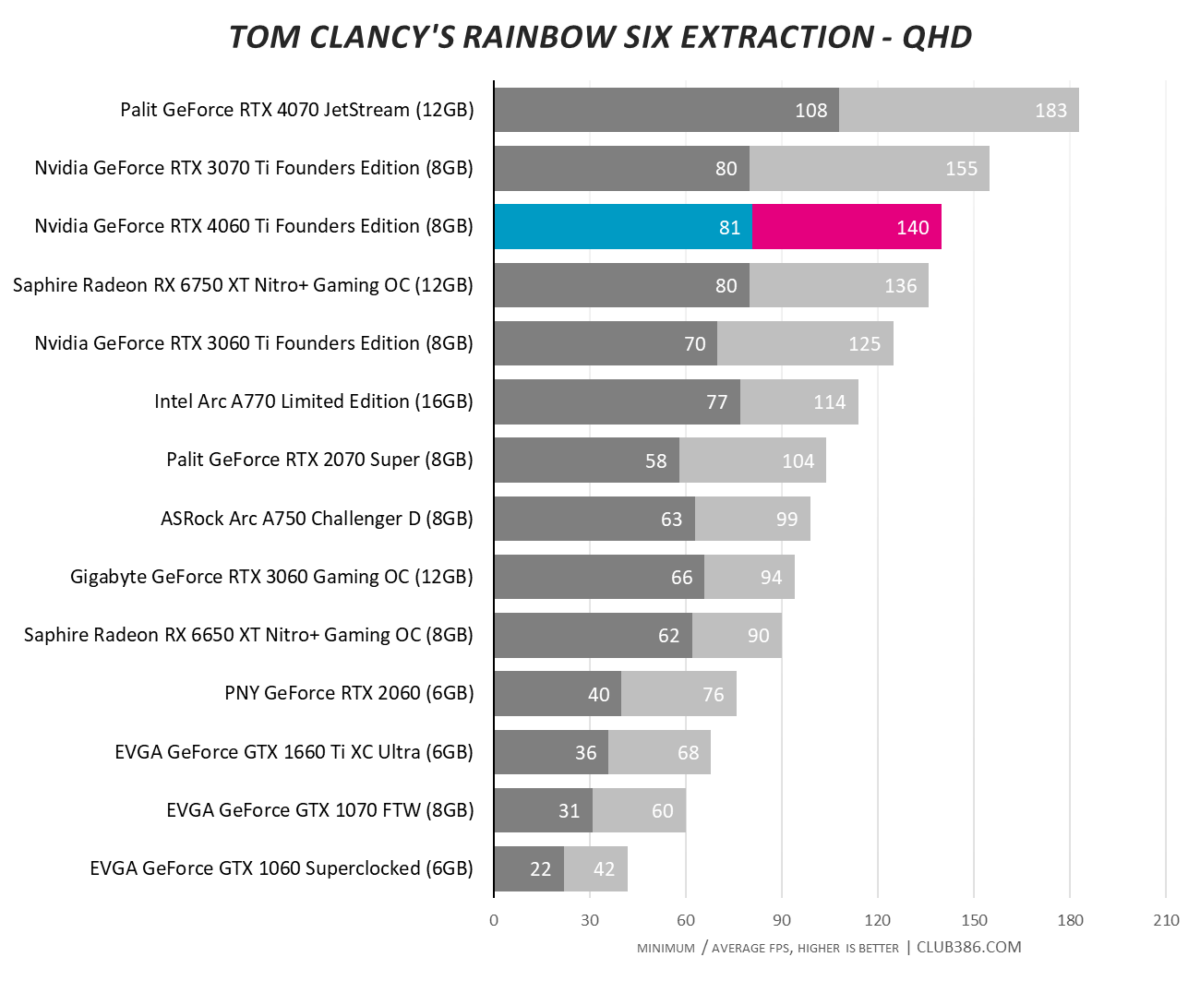
When testing such a broad array of GPUs, the overall experience is brought into focus. Every 6GB card in our charts would flash up warnings across different titles at maximum quality settings. 8GB models don’t yet fall into that trap, though there are now a couple of games questioning the long-term credentials of such a configuration. Are the likes of Hogwarts Legacy and The Last of Us a sign of things to come, or merely poorly optimised titles? Only time will tell.

Show your support for impartial Club386 reviews
Club386 takes great pride in providing in-depth, high-quality reviews built on honest analysis and sage buying advice. As an independent publication, free from shareholder or commercial influence, we are committed to maintaining the standards our readers expect.
To help support our work, please consider making a donation via our Patreon channel.
Power, Temps and Noise
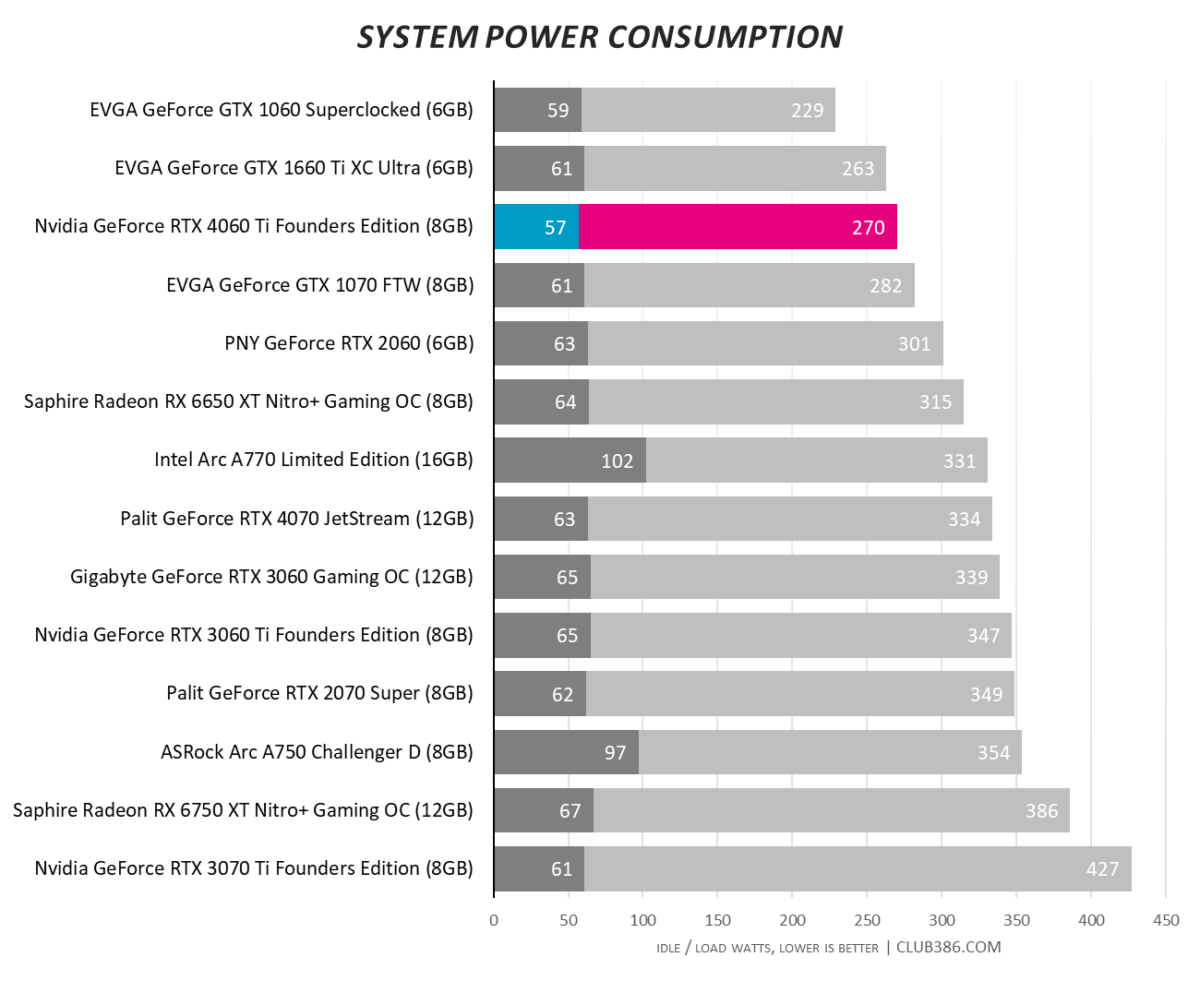
Want to upgrade while keeping energy costs down to a respectable level? The Ada Lovelace architecture excels with regards to efficiency, and as is to be expected given the performance on offer, RTX 4060 Ti is easily the most frugal 40 Series GPU to date, coming bundled with a single eight-pin-to-12VHPWR adapter for use with older PSUs.
Side note: Intel’s day-one driver updates are all well and good, however a fix for Arc’s irresponsible idle power consumption is long overdue.
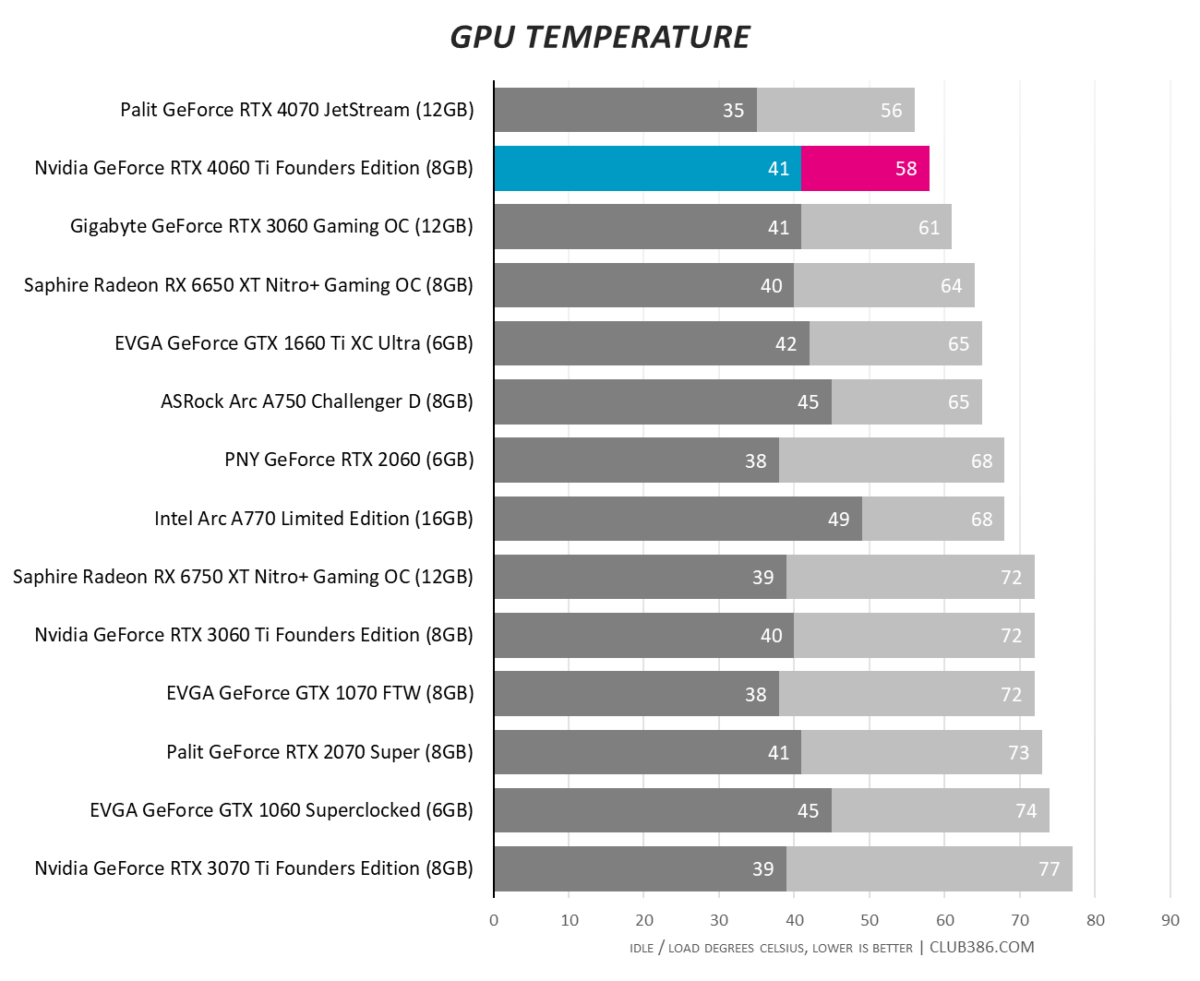
Thrifty design translates to ultra-low temps and outstanding consistency. RTX 4060 Ti remained glued to 2,760MHz throughout testing and never looked likely to breach 60°C, even on a warm summer’s day.
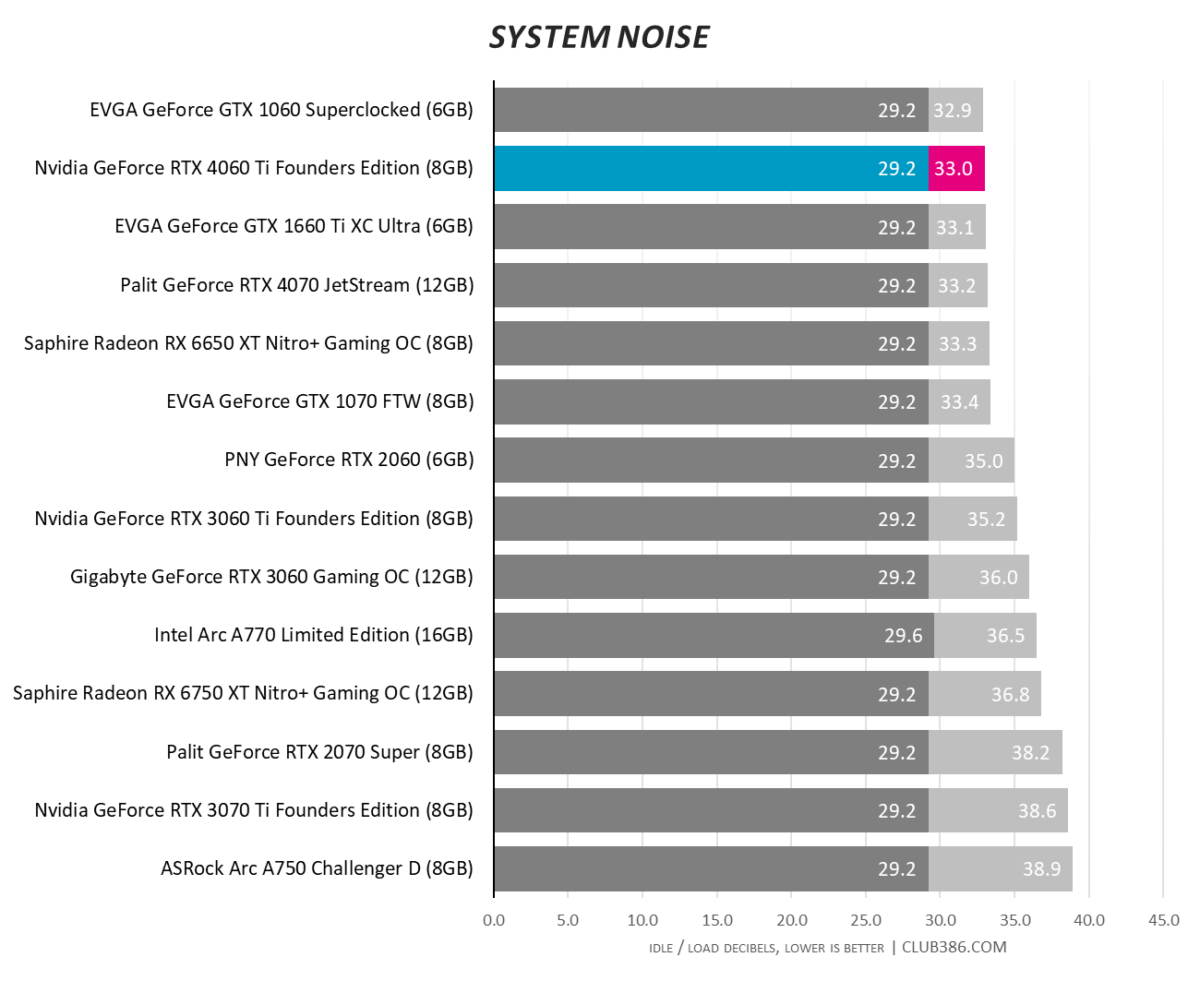
Like RTX 4070 before it, fan speed tops out a mere 30 per cent (~1,400RPM) inside our real-world test system. The card is quiet when gaming and practically silent when the fans switch off at low load.
It is a beautiful piece of kit, echoing dual-slot RTX 4070 form factor, albeit with a lighter shade of silver trim, and as is now customary, the exquisitely crafted Founders Edition sets a high bar for add-in-card partners to try and match.
Relative Performance, Efficiency and Value
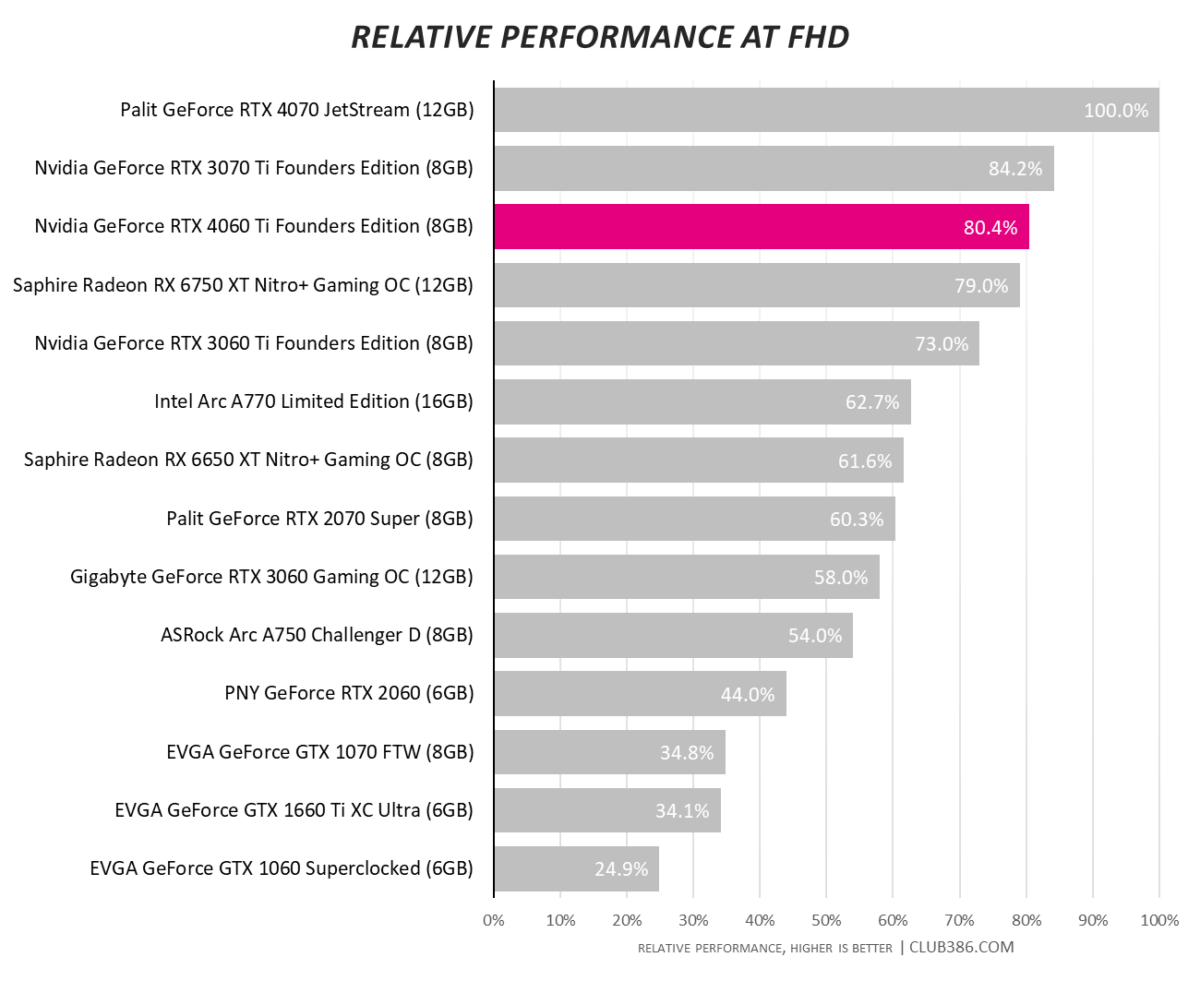
Evaluating relative performance across all benchmarked games reveals RTX 4060 Ti offers roughly four fifths of RTX 4070 performance. The increase over RTX 3060 Ti is down to single digits.
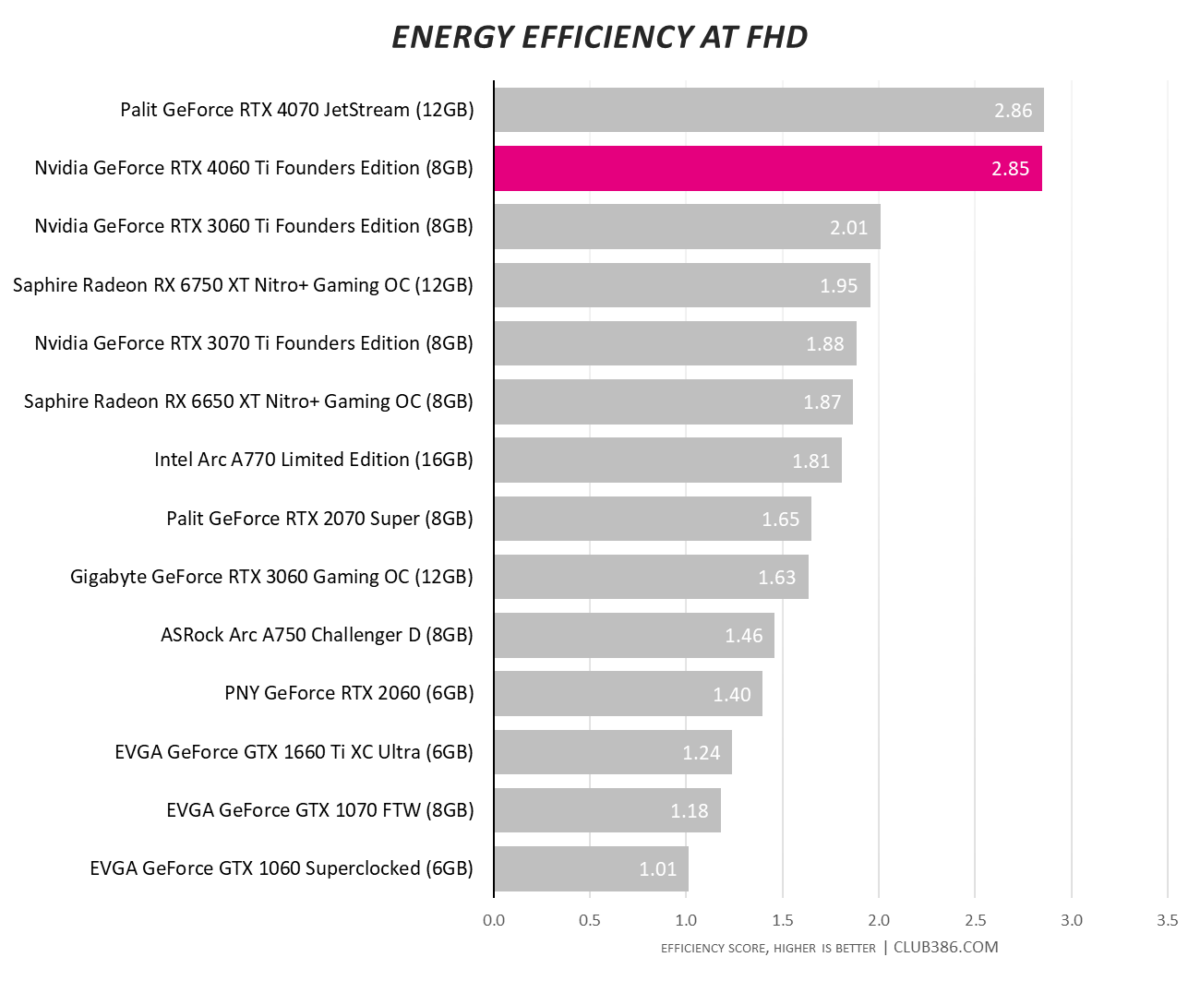
Dividing average framerate by system-wide power consumption validates Ada Lovelace’s outstanding efficiency. Note the chart-topping score only takes into account ‘real’ frames; Nvidia’s lead would extend further with AI-generated frames added to the equation.
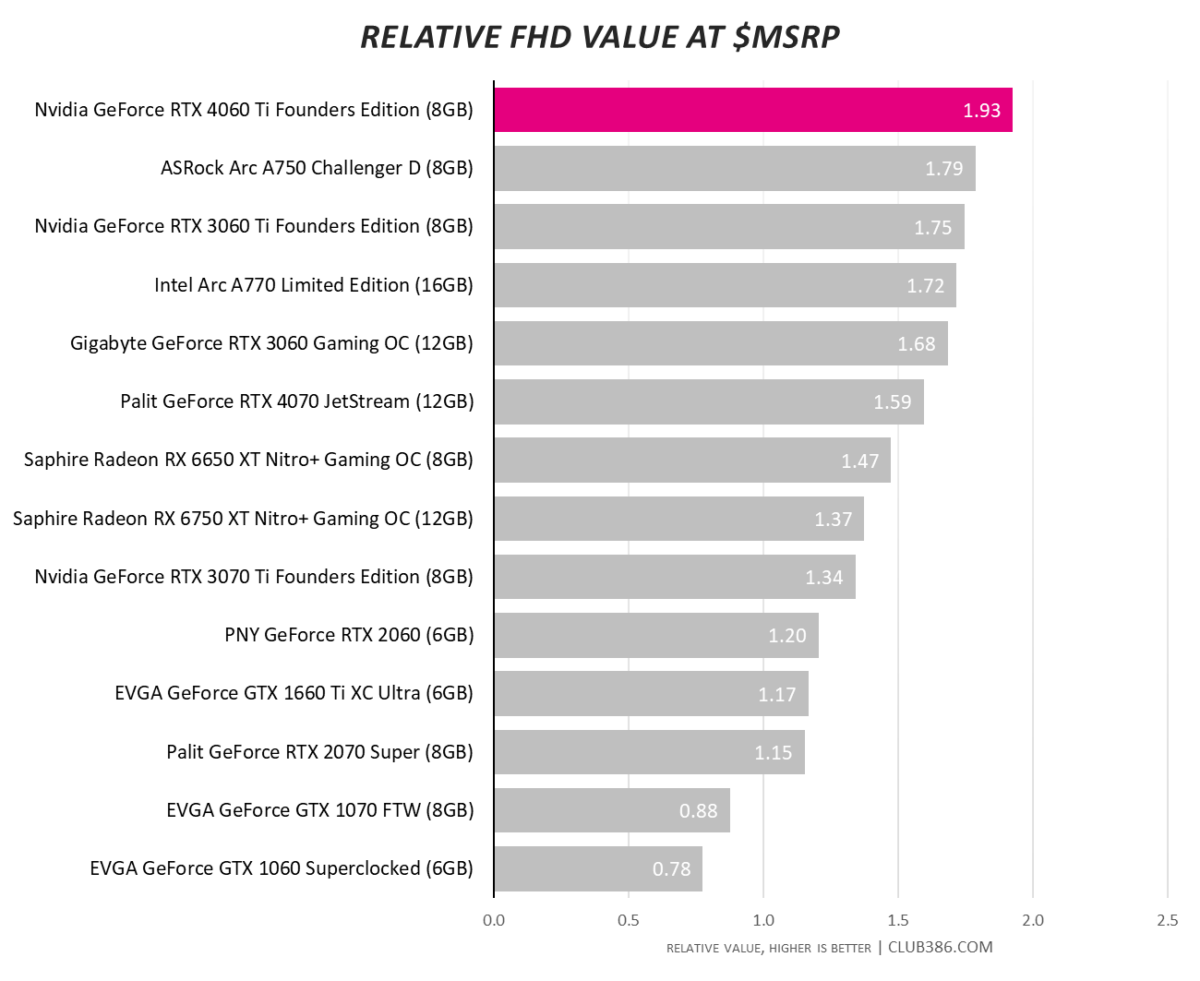
Dividing average framerate by each GPU’s dollar MSRP always leads to fascinating discussion. At $399, RTX 4060 Ti tops the chart without breaking a sweat.
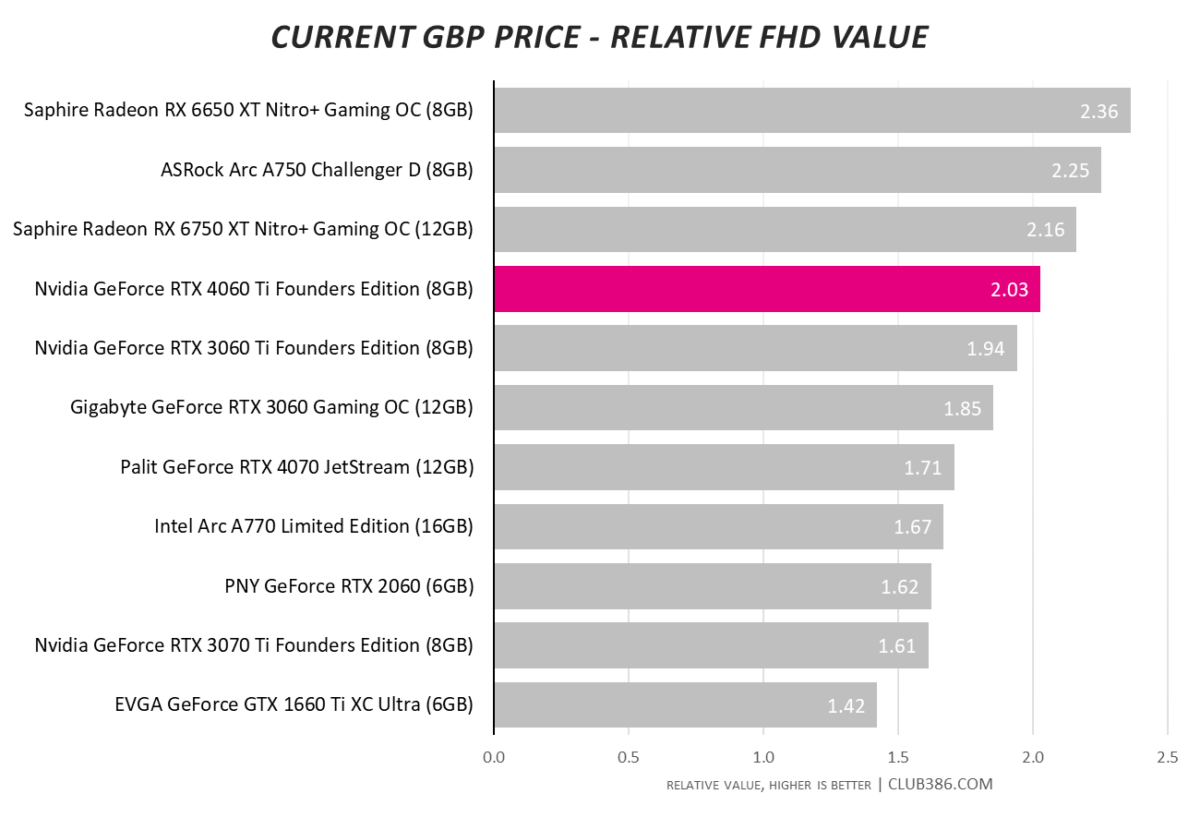
Launch MSRP provides one view, another is to examine the best offers available at the time of writing. Club386 has scouted all the popular UK stores to find the lowest GBP price on each listed GPU. You may notice a few cards have fallen off the chart completely; they’re simply no longer available to buy.
In this scenario, Nvidia’s £379 Founders Edition doesn’t enjoy such an easy ride. Price cuts on rival AMD and Intel cards offer much-needed competition, and RTX 4060 Ti would need to drop closer to £320 in order to reclaim top spot.
Overclocking
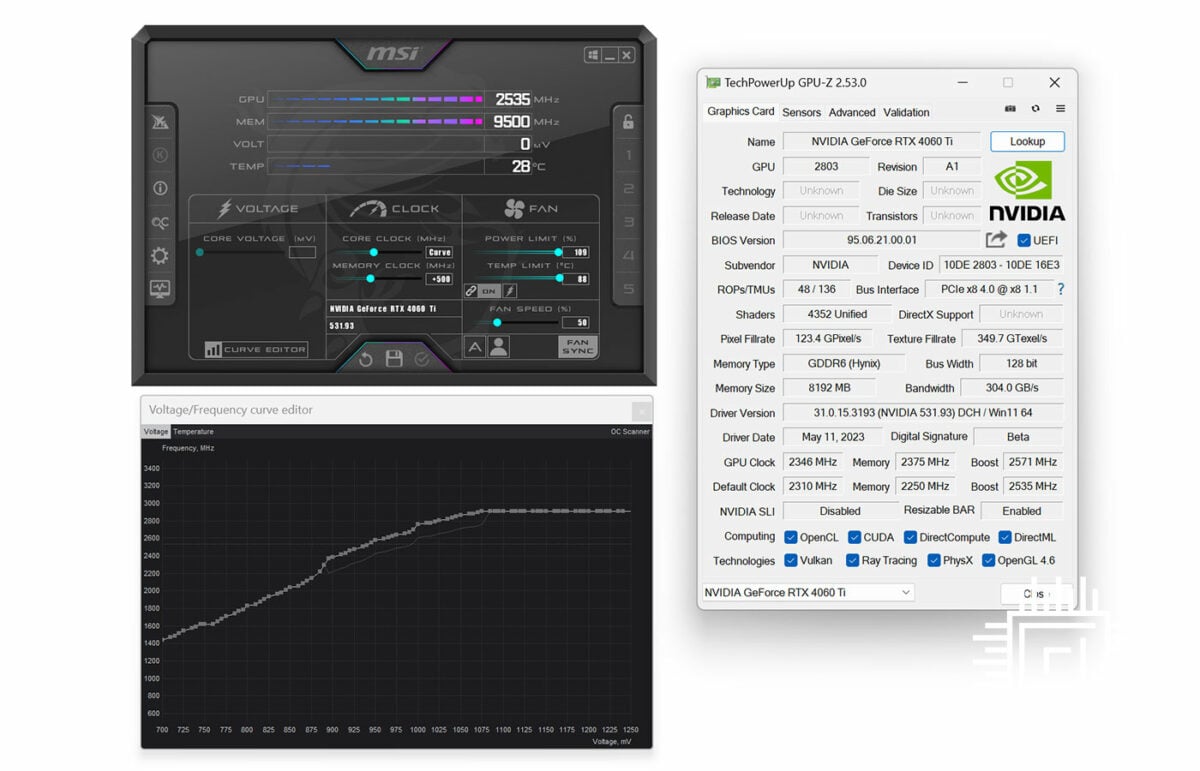
Pushing graphics cards to the limit through heightened power and frequency may be an increasingly niche past time, yet it’s always nice to see a GPU that responds well. Using the automated scanner built into MSI’s Afterburner utility, in-game RTX 4060 Ti boost clock climbs from 2,760MHz to 2,910MHz without problem. We expect enthusiasts to approach the 3GHz mark, while memory has no trouble scaling from 18Gbps to 19Gbps, helping alleviate some of those bandwidth concerns.
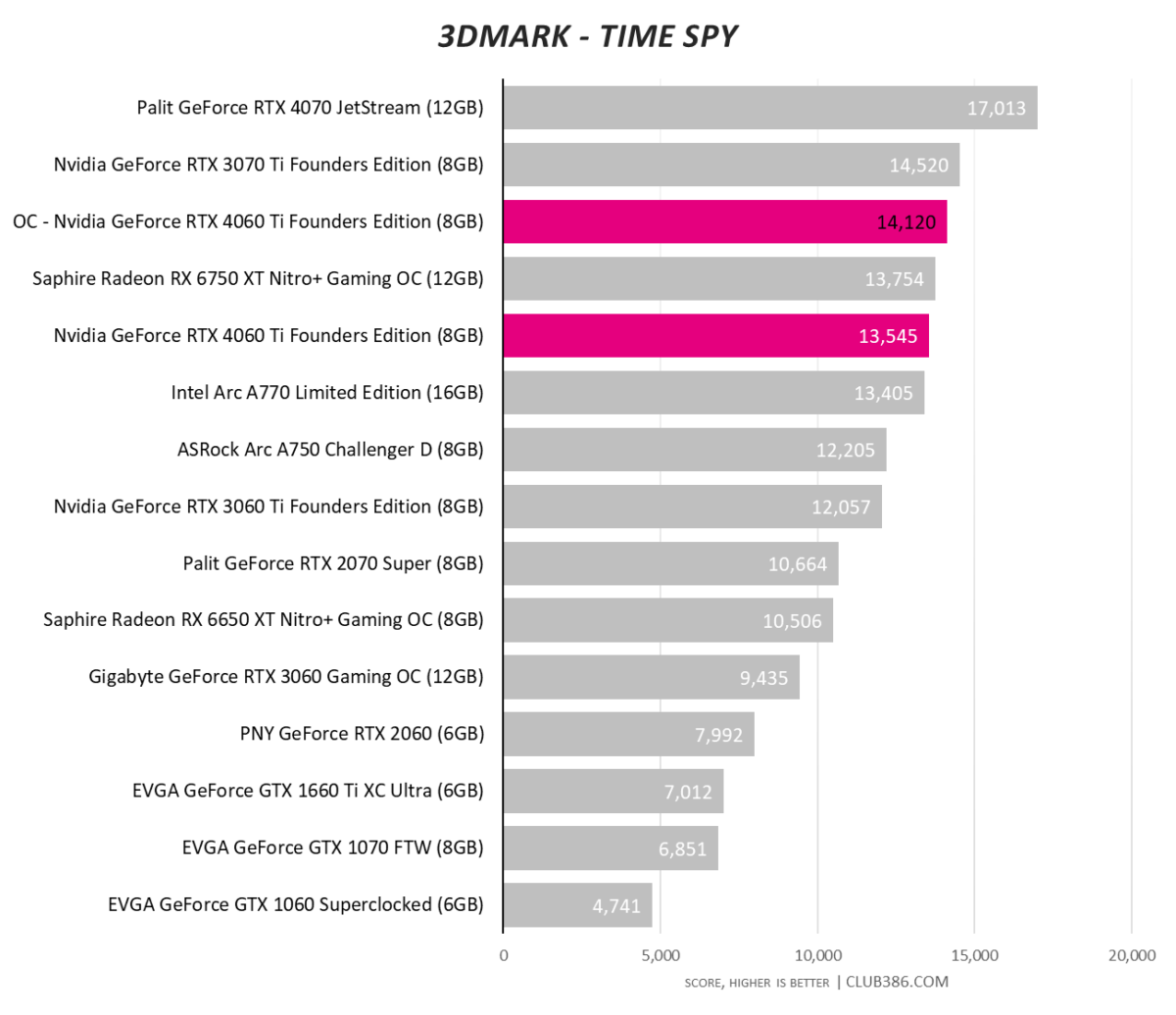
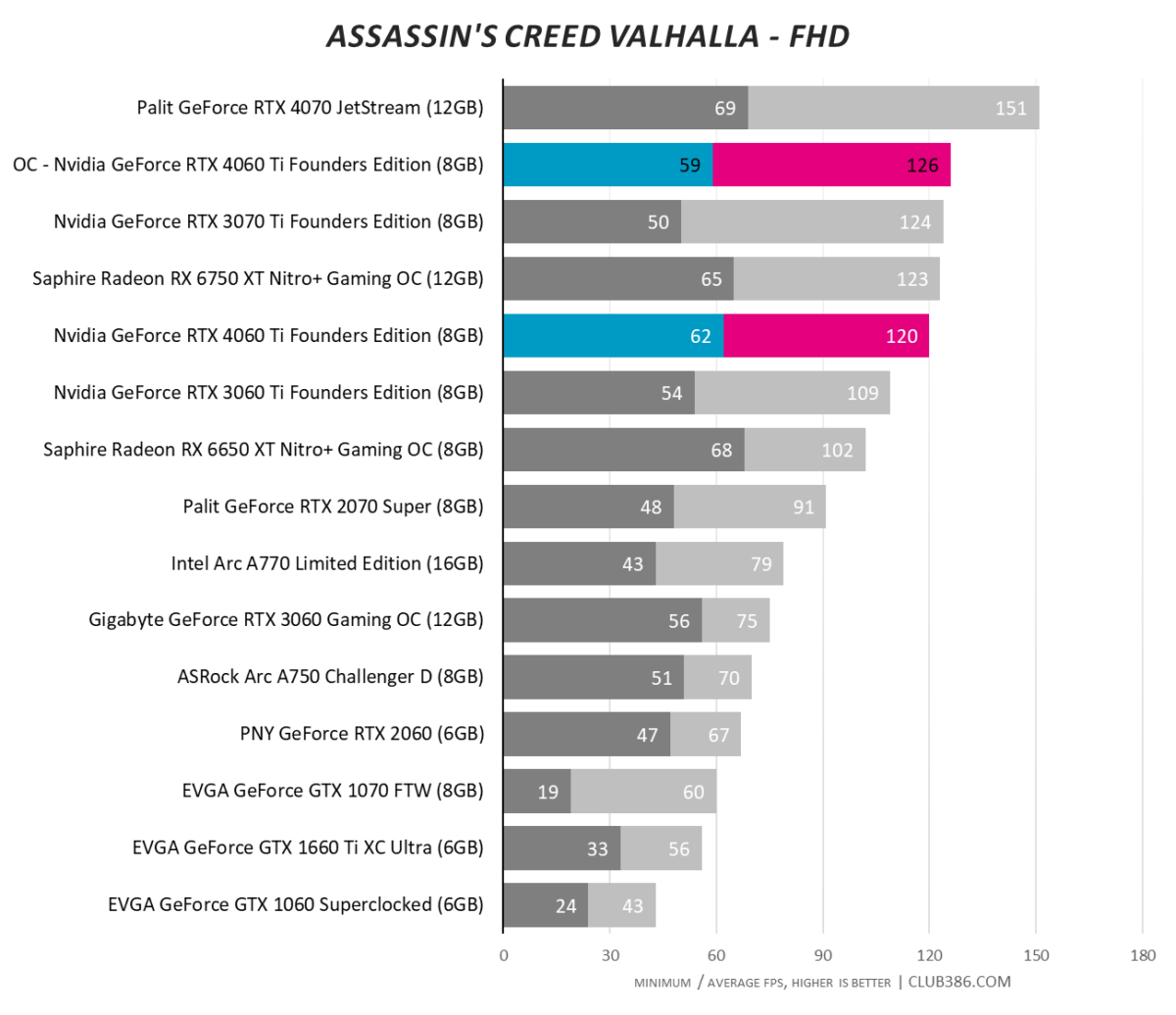
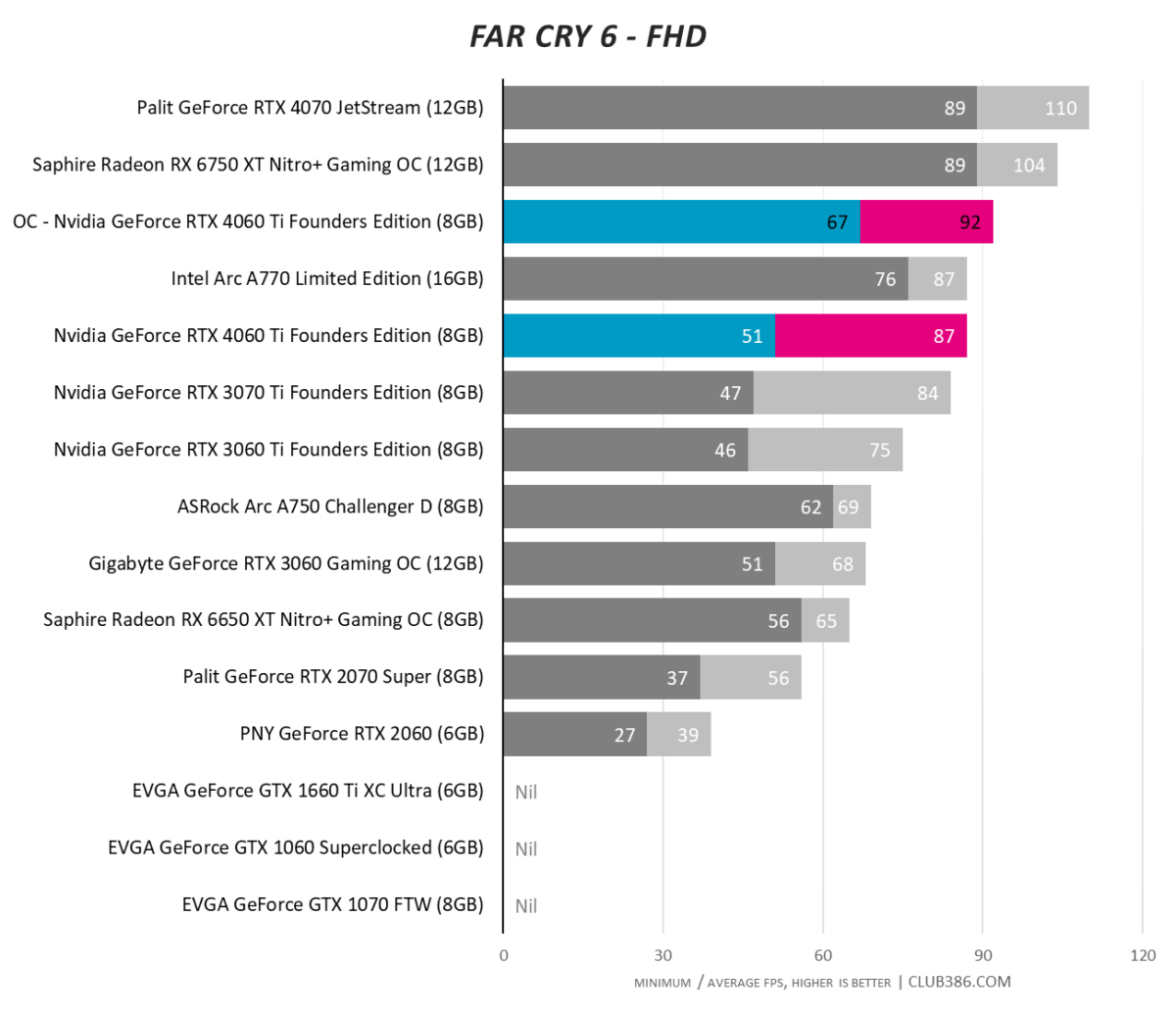
There’s a reasonable amount of headroom to play with, resulting in a five per cent in-game performance uplift at 1080p.
DLSS 3
Rejogging the memory banks after all those benchmarks, remember developers now have the option to enable individual controls for Super Resolution and / or Frame Generation. The former, as you’re no doubt aware, upscales image quality based on setting; Ultra Performance works its magic on a 1280×720 render, Performance on 1920×1080, Balanced works at 2227×1253, and Quality upscales from 2560×1440.
On top of that, Frame Generation inserts a synthesised frame between two rendered, resulting in multiple configuration options. Want the absolute maximum framerate? Switch Super Resolution to Ultra Performance and Frame Generation On, leading to a 720p upscale from which whole frames are also synthesised.
Want to avoid any upscaling but willing to live with frames generated from full-resolution renders? Then turn Super Resolution off and Frame Generation On. Note that enabling the latter automatically invokes Reflex; the latency-reducing tech is mandatory, once again reaffirming the fact that additional processing risks performance in other areas.
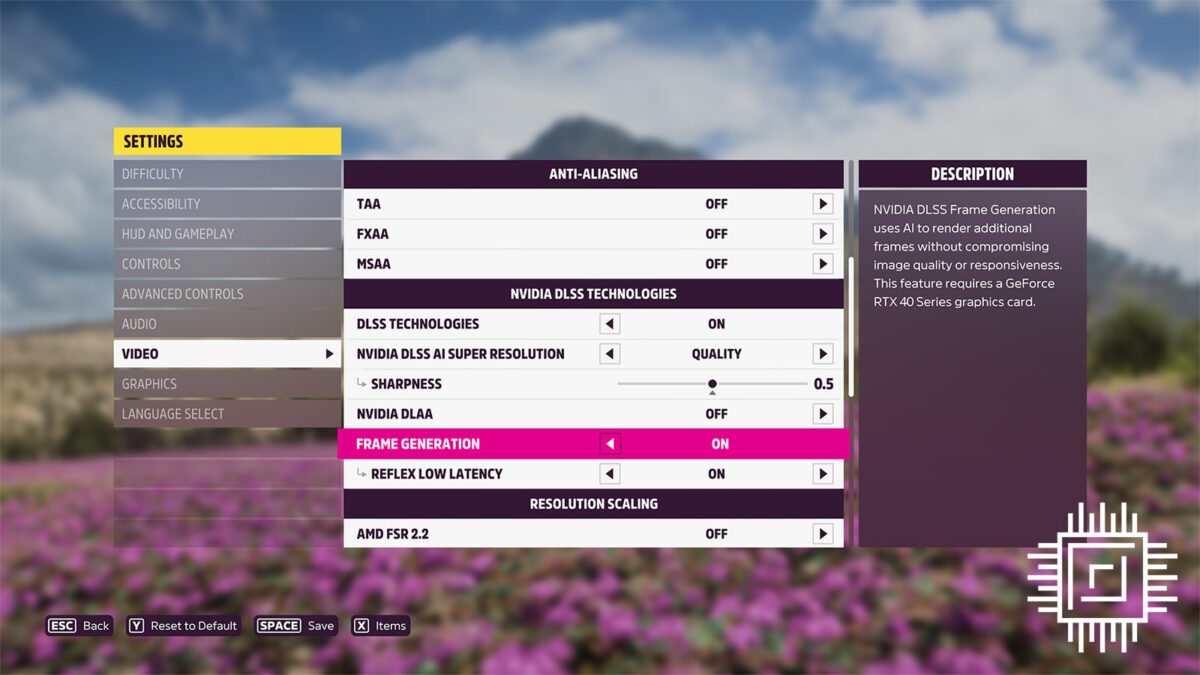
DLSS 3’s initial success is reflected in industry adoption. Rival GPU manufacturers are scrambling to introduce their own variants, while triple-A games such as Forza Horizon 5 (pictured above) and Diablo IV are choosing to add full support for AI-powered frame generation. It is quickly becoming a sought-after feature with good reason, as results have been impressive thus far.
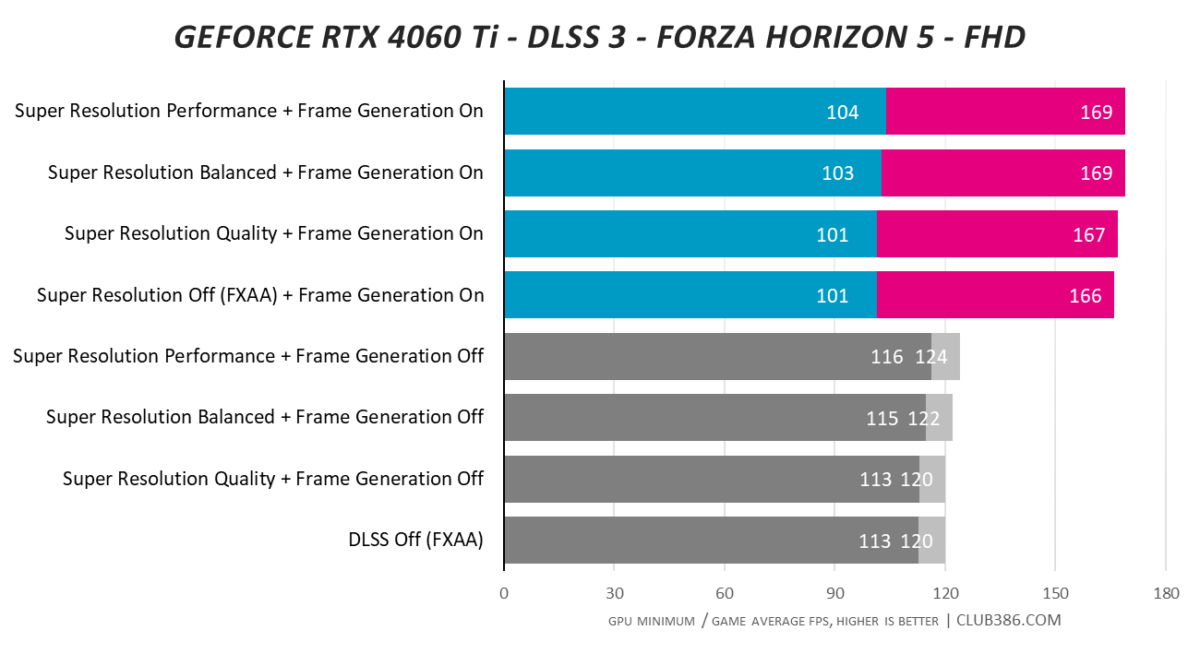
Forza Horizon 5 is one of the better implementations to date. While super resolution results in only evolutionary performance gains, frame generation is revolutionary by comparison. Flick a switch and performance is instantly bolstered to the tune of 38 per cent.
Getting performance purists on board with AI-enhanced gameplay is proving a tough task – it’s akin to convincing a petrolhead to go electric – yet the future of gaming is intrinsically linked to resourceful design. Right now, DLSS is the best example of how to multiply performance through AI.
Conclusion
Nvidia has extended the reach of its ultra-efficient Ada Lovelace architecture to $399 / £379 with the introduction of GeForce RTX 4060 Ti.
Tasked with being the first RTX 40 Series card to break into Steam’s top 10 most popular GPUs, the newcomer aims squarely at 1080p gamers still rocking cards from a few generations ago. The upgrade argument is bolstered through high-framerate gameplay, best-in-class ray tracing, excellent efficiency and AI-based performance enhancements no competitor can match.
Such credentials ought to make RTX 4060 Ti an obvious choice for millions of gamers looking to belatedly changeover from ever-popular GTX, yet there’s pause for thought. Whether or not an 8GB memory configuration will stand the test of time is up for debate, and in 2023, the best part of four hundred pounds for a card geared explicitly for 1080p feels steep in the current climate.
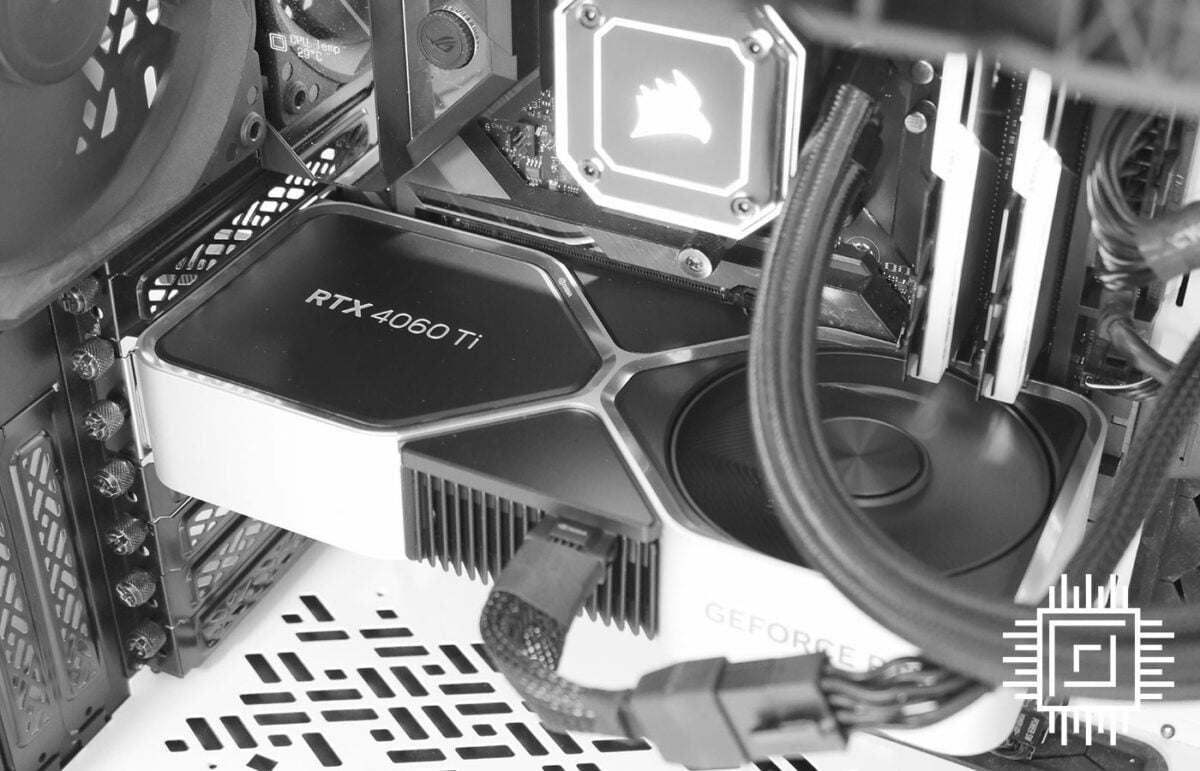
Nvidia GeForce RTX 4060 Ti Founders Edition
Verdict: Intended to be many gamers’ first RTX, 4060 Ti is a worthwhile upgrade over much older cards.
Pros
Top-notch 1080p gaming
Beautiful Founders Edition
DLSS 3 goes mainstream
Incredible efficiency
Always cool and quiet
Cons
Lacks VRAM staying power
Mild upgrade over last gen
No bundled game
Club386 may earn an affiliate commission when you purchase products through links on our site. This helps keep our content free for all.
Rest assured, our buying advice will forever remain impartial and unbiased.








